In the story of the Duel Terminals, there was a peaceful tribe named the Gem-Knights… They were resilient, they had fought off the invaders time and time again. However, now smoke descended upon the peaceful village, rendering them unawares of those emerging from the depths of the restless ground beneath. The assault from the Firey Woodlands had begun!
WARNING: This article is considered a Mega Article by my standards; this one is equivalent to approximately six of my normal CDS articles. So massive article incoming.
|File 02 – The Second Terminal War
|Data Manifestation Code: Cresc.500.551

Lore Background:
The Laval archetype is a Duel Terminal archetype, a member of the original tribes of the Second Terminal World, that is comprised of FIRE monsters of various types, primarily Pyro and Warrior-type monsters, but they are all based on a variety of influences! While I normally don’t spend much time in my normal Casual Deck Strategy Articles discussing lore, I think it is fascinating in the case of the Duel Terminal and all of the connections between the archetypes, card arts and effects. As with my previous DT Mega Articles, I am going to continue writing a section about card lore and neat connections, so if you are completely bored by this kind of thing, skip to the Table of Contents below. Otherwise, prepare to be illuminated by some really cool facts and similarities. For additional information beyond what I have included in this section, check out some of the information in the Master Guides, specifically Master Guide 3.

Welcome to the Second Terminal World:
Our story begins with a scene overlooking the home of the FIRE tribe of the Second Terminal World – the lava fields beside of the Gem fields. These aren’t just ordinary lava fields: ringed by the Firey Woodlands, which have been rumored to have been burning since the dawn of the era, this was a fortress. From their castle in the center of the searing land, the Lavals much like the other tribes of the Second Terminal World fought for their own reasons rather than complete dominion over the world. The reason for the Lavals – to expand their territory. So which other tribe would quickly become their rivals in every way? That role fell to the Gem-Knights, a tribe devoted to peace and that wished to refrain from fighting whenever possible. So the strategists in the Laval ranks devised a simple plan – attack the peace-loving inhabitants time and time again until they broke and surrendered to their invading forces. Before I continue, you have to understand, the Laval are at their roots are extremely barbaric.
The individual members of the tribe itself is a fusion of medieval technology and history (those who rule from the Fortress) combined with the sprites and majestic creatures that inhabit the Firey Woodlands. As soon as you realize this, it should make perfect sense as to why so many Laval support cards do not go under the name of ‘Laval something’. They are a tribe, unified solely by their location in the lava zone, that fights together out of necessity. The first batch of Laval to be released was under the guidance of Lavalval Dragon and Laval the Greater! Our first look at the overall theme of the archetype and how it would play out in the actual TCG began here, with the release of Laval Miller. Right away, we had another Graveyard-centric FIRE theme, except, and it wouldn’t even have to rely upon Rekindling like its Flamvell predecessors of the Original Terminal World. I realize that changed down the road, but let’s focus back on the amazing time before knowing that. The keeper of the Fortress’s gate, Miller begins everything by letting his fellow Lavals loose into the Graveyard. With that initial assist of Lavals in the Graveyard, Laval Warrior and Laval Burner, the grunts of the operation, could take form and join the fray. Joining forces with the Laval grunts were Prominence, Molten Swordsman and Kayenn, the Master Magma Blacksmith, each of whom also resided within the fortress.
archetype and how it would play out in the actual TCG began here, with the release of Laval Miller. Right away, we had another Graveyard-centric FIRE theme, except, and it wouldn’t even have to rely upon Rekindling like its Flamvell predecessors of the Original Terminal World. I realize that changed down the road, but let’s focus back on the amazing time before knowing that. The keeper of the Fortress’s gate, Miller begins everything by letting his fellow Lavals loose into the Graveyard. With that initial assist of Lavals in the Graveyard, Laval Warrior and Laval Burner, the grunts of the operation, could take form and join the fray. Joining forces with the Laval grunts were Prominence, Molten Swordsman and Kayenn, the Master Magma Blacksmith, each of whom also resided within the fortress.
But the lava zone territory was wider than just a fortress. From the beginning, we were introduced to two very special creatures – Soaring Eagle Above the Scorched Land and Laval Forest Sprite. The Sprite was the first indicator of the Laval’s allies from the surrounding area, and the eagle was the first sign of the Synchro-reliance of the archetype. 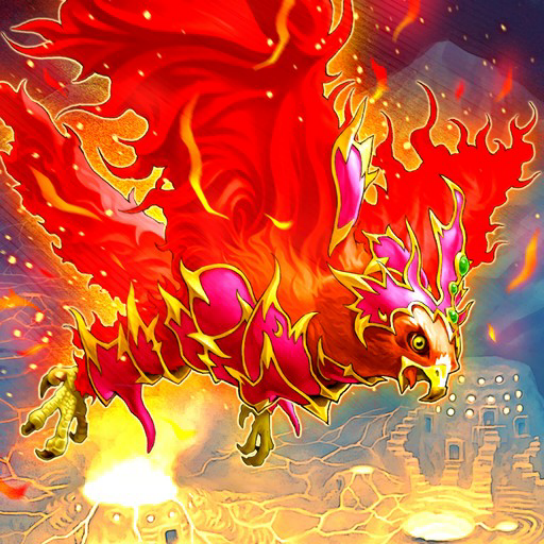 Speaking of Synchros, let me backtrack to a comment I made early on in this section indicating that the Laval archetype was a fusion between those of the Fortress and those of the lava zone, firey woodlands and the volcanoes that defined the ‘Searing Land’. The Synchros of the Laval tribe are exactly that – fusions of various creatures that inhabit the Terminal World. For example, Laval the Greater is literally the combination of Soaring Eagle combined with Laval Burner! You can literally see his transformation in the trap card Molten Whirlwind Wall, the first Trap support of the archetype. On the other hand, Lavalval Dragon is the combination of Miller and Forest Sprite. This may be a bit of a stretch for you, but compare the skin textures of both Dragon and Miller and you will see the strong resemblance right away. So thus the duality of the Laval who lived in the forest (Dragon) and the Laval who lived in the Fortress (the Greater) was established.
Speaking of Synchros, let me backtrack to a comment I made early on in this section indicating that the Laval archetype was a fusion between those of the Fortress and those of the lava zone, firey woodlands and the volcanoes that defined the ‘Searing Land’. The Synchros of the Laval tribe are exactly that – fusions of various creatures that inhabit the Terminal World. For example, Laval the Greater is literally the combination of Soaring Eagle combined with Laval Burner! You can literally see his transformation in the trap card Molten Whirlwind Wall, the first Trap support of the archetype. On the other hand, Lavalval Dragon is the combination of Miller and Forest Sprite. This may be a bit of a stretch for you, but compare the skin textures of both Dragon and Miller and you will see the strong resemblance right away. So thus the duality of the Laval who lived in the forest (Dragon) and the Laval who lived in the Fortress (the Greater) was established.
Before we can continue introducing the Laval, we must wrap up the initial stages of the attack onto the Gem-Knight tribes. You could almost liken the attack to the Zerg vs the Protoss of the Starcraft realm – The Laval are constantly blitzing, trying to make a dent in the Gem-Knight army who has considerable power from their gemstones yet is split into factions, smaller tribes spread across their section of the Terminal World. After the first few attacks were unsuccessful, the Laval launched the largest assault with all of their forces… But before the fighting could begin, both tribes came to the realization that the surface land may no longer be theirs to defend or conquer, as there were greater forces at work. For the Steelswarm had been unlocked from the depths by the Laval’s sister tribe, the Gishki. Pushing aside their differences, the Laval united with the other elemental tribes under the Vylon to defend their home from an enemy that
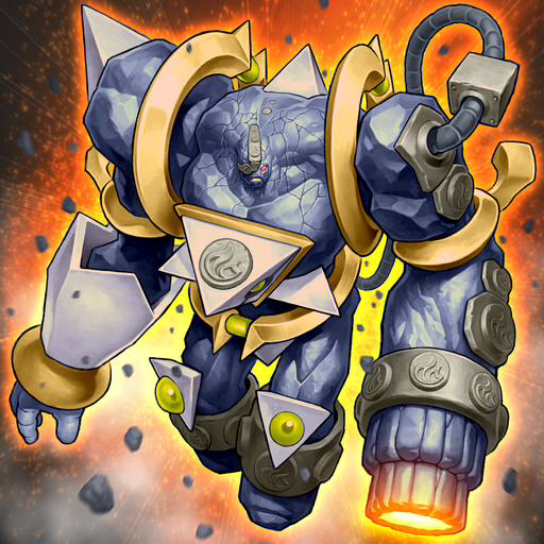
looked to dominate and destroy all.
Now that we’ve gotten that out of the way, the next Hidden Arsenal Booster to feature the Laval was the first time the deck was finally ready to share a glimpse at what it would become. From the fortress, Laval Cannon was the newcomer on the scene in battle – the medieval technology had taken yet another step forward in looking to defend the world. From the lava zone, Laval Volcano Handmaiden entered the fray. With the addition of each monster, the Laval deck seemed more and more complete. It now had something it could do with Lavals banished by Greater, and it even gained a new boss monster in the form of Laval Stennon! In the Vylon article, I described its origins as being Cannon + Stella, remember, so I won’t go into more details on him. With a new skill of banish retrieval, and even more speed at sending Lavals to the Graveyard for future use due to Handmaiden, the future of the deck was looking bright… Even their worst fears were vanquished – The Steelswarm had been defeated! As with any tale of woe, it obviously grows worse from there as the Vylon advance to the Xyz Era, but as we already know, the Lavals advanced to the Xyz Era as well.
Before we can talk further on story, we gotta introduce the last newcomers to the Laval archetype! Laval Lakeside Lady was the sprite of the Lava zone, and quickly became a star of the complete Laval variant, as she was the first to actually create card advantage from the Graveyard! Alongside Lady, Laval Coatl who effectively is a tuner version of Burner, emerged from the volcanoes of the lava zone. Lastly, Laval Blaster, the latest advance in mecha technology, emerged from the fortress fully suited up and ready to rumble. Alongside Stennon who ruled from the Fortress, Lavalval Dragun became the combination of Laval Coatl and Laval Blaster – the newest terror from the firey woodlands. In the next DT  Pack, we were introduced to the final Laval cards that could define the strategy – Laval Phlogis, who could augment his fellow Lavals when sacrificed to the Graveyard, and Molten Conduction Zone, the best support card the Laval could have ever gotten.
Pack, we were introduced to the final Laval cards that could define the strategy – Laval Phlogis, who could augment his fellow Lavals when sacrificed to the Graveyard, and Molten Conduction Zone, the best support card the Laval could have ever gotten.
Now that we know all of the players, let’s return to the craziness of the Terminal World. At the dawn of the Xyz Era, the Terminal World was in shambles as the tribes rushed to ally against their turned gods, the Vylon. During this time of chaos, the barbaric nature of the Laval prevailed and they managed to excel and evolve in the chaos. Assimilating members of other archetypes into its own ranks, the Laval became the tribe to have the most elements of the others included in its ranks. Forming Laval Ignis, the Laval combined Gem-Knight Obsidian with their own Lakeside Lady, and with that, another great warrior was added to the lava zone. Forming Lavalval Chain, the Laval combined Laval Phlogis and Gishki Chain, and with that, another master of milling was added to their ranks. And don’t forget, the Vylon were already absorbed with the creation of Laval Stennon. Unfortunately for our Laval overlords, Diagusto Phoenix was the combination of Coatl and Gusto Falcon, and decided to return to the WIND tribe of the marshlands. But of course, being able to absorb so much power led to the incarceration of the Laval…
As soon as the even more crazy Gishki monsters realized just how powerful the Laval tribe had become, they began using the Lavals as the sacrifices necessary for their Ritual Summons. Their rituals may have been evolved forms of fallen Steelswarm entities, but the Laval became the power source to fuel them. Unwilling to strike back against a foe clearly more powerful than itself, the Laval just allowed the sacrifices to happen. But in doing so, they were able to survive; as they were kept off of the front lines of the fight between the Evilswarm and the Constellar.
We know that the Laval and the Gusto guaranteed their continued existence in the Terminal World beyond the end of the above tale. Accompanying its fellow elemental tribe, the Laval and the Gusto simply faded from the recorded histories. It is currently unknown if the Laval survived the events surrounding Sophia’s arrival and her eventual defeat; however, it has been shown that the Gusto managed to live on despite Sophia being summoned in their very own Shrine of Mist Valley through Pilica, Lineage of Gusto. Also, the chains of slavery around the Laval definitely weakened when the Gishki were hit by the full brunt force of Sophia. My hope and dream is that the Laval escaped such an unfortunate fate as well; however, we will never know until we see the Laval receive additional support or some new card that depicts the events of Sophia from the perspective of the Laval! (We already have this for the Gusto and Gishki in the form of ‘After the Storm‘).

Table of Contents:
- Meeting the Laval – A Gameplay Perspective
- Deck 1 | Laval Eruption
- General Strategy, Deck Example, Discussion, Combos, Traps Part 1
- Deck 2 | Magma Warriors
- Strategy, Deck Example, Discussion, Traps Part 2
- Deck 3 | Laval Quasar!
- History, Mindset – TCG VS OCG, Time to Construct, A Modern View, Traps Part 3
- Deck 4 | The Laval Engine
- Reasoning & Basic Strategy, Laval-Strings, Variant Discussion, Lavart, Variant Discussion, Possibilities…
- Conclusion
- Common Misconceptions, Closing
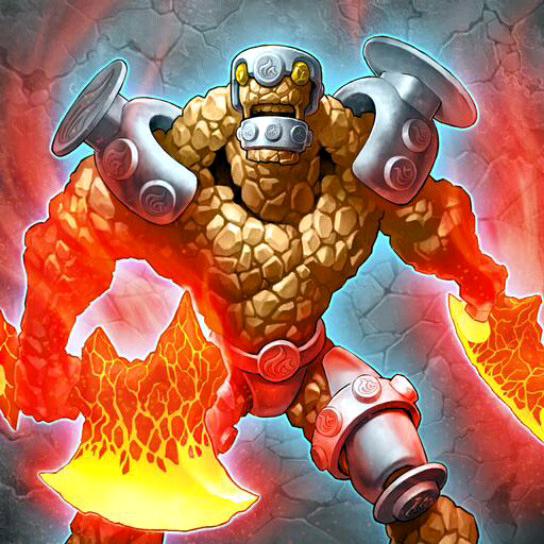
Meeting the Laval!
Alright everyone, it’s time to put our feet to the coals and start diving straight into the wondrous sight to behold – the Laval tribe with all of its fury and prowess. I will apologize from the beginning, I have been saving ‘hot’ jokes for quite some time, I’m sure you’ll be crackling up by the end of this segment! The second wave of Duel Terminal tribes is unique in that they tried to release 6 completely different tribes, each benefiting the most out of a different mechanic and in fact embodying the mechanic entirely, to showcase the different styles of archetypes that could be in the game. For example, Vylon was determined to be ‘The Equip Archetype’. Gusto was determined to be ‘The Floater Archetype’. Gishki was determined to be ‘The Ritual Archetype’. Steelswarm was determined to be ‘The Tribute Archetype’. Gem-Knight was determined to be ‘The Fusion Archetype’. And that leaves us with Laval. But what is the Laval’s identity? If you say Laval is ‘The Milling Archetype’, I raise you Lightsworn, which does a hell of a better job of embodying that. If you say Laval is ‘The Synchro Archetype’, note that 2 of the other Tribes had Synchros as well, they were even the win condition for both of the other tribes. So where do the Laval fit into this portrait? Keep this question in your mind, and let me guide you through this blistering guide. Maybe you’ll figure it out along the way!
So moving from card theory, I know you want details. The Laval is an archetype comprised of FIRE monsters of various types. Only 2 out of their 20 archetype members support the FIRE attribute, everything else either supports or requires support from the ‘Laval’ archetype. For me, that’s strange, seeing as Laval is great at being whatever you want it to be. Sometimes I consider Laval to be the ‘Jack-Of-All-Trades’ of the DT world – It has power plays, it has advantage plays, it has ways to increase consistency, and it even has decent boss monsters. It has great synergy with a ton of generic cards, and no, I am not just talking about Rekindling when I say that. Now that I’ve brought it up, I will say this once CONSTANTLY – the Laval archetype is not completely reliant on Rekindling!!! I totally would type that again for emphasis, but I know the intended audience would just skip it again. But what unifies the Lavals, what makes a Laval monster actually be a part of the Tribe? If you read the lore section above, I made quite a few references to the barbaric nature of the tribe, its feeble command structure, and that the only thing driving the tribe to come together was the common goal of expanding their lava zone of control. When I say that Konami did a good job linking an archetype and lore, I really mean it. And for the Lavals, this concept really is tied exceedingly well to their potential playstyles.
To summarize in one sentence – The Laval tribe is a hodgepodge of different effects that require other Laval to either use or benefit from. Sounds quite like a barbaric tribe no? Being unable to accomplish anything on their own, forcing to unite together to get anything accomplished? (Yes, I am thinking of something similar to Mance Rayder’s wildlings, for GoT lovers such as myself.) There is a bunch of ‘Milling’ Lavals for this purpose; Laval Miller, Laval Volcano Handmaiden, Lavalval Dragun, and Laval Blaster each have their own method of filling the Graveyard with Lavals to exploit. Miller is specific multi-milling with a conditional activation, Handmaiden is specific solo-milling with a less conditional activation, Dragun is solo-milling with no conditions, and Blaster serves as the random milling option. Each has its benefits, but the most important characteristic of all is that they are required for the Laval Archetype to hit its full potential. What does such a milling-heavy strategy benefit? Let’s introduce those that require milling to function.
First up, the initial ‘subgroup’ of the Laval archetype that requires Laval monsters in the Graveyard is the Special Summoners. These two monsters consist of Laval Burner and Laval Coatl. While neither seems all that powerful at first glance, give them a shot. If you start off with Blaster to begin the pyroclastic flow, milling 2 Laval with his effect nets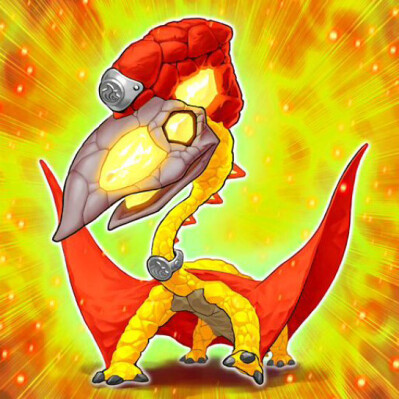 you a Lavalval Dragun with the help of Coatl summoning itself from the hand. And then Dragun leads to more milling, or perhaps even searching for that Laval monster you are simply missing. While Coatl shines as a inherent-summoning tuner, Burner shines as being a key Laval for enabling OTK fields. A free 2100 special summoning itself from the hand may mean nothing to you, but note that you don’t even need to have an empty field to do so, or your opponent to have a monster. Also, Burner is searchable by Dragun, which can mean all the difference sometimes. While both of these monsters can only function optimally in certain situations in a vacuum, yet again the Laval archetype can surprise you by adding more depth by mixing in monsters with way different effects.
you a Lavalval Dragun with the help of Coatl summoning itself from the hand. And then Dragun leads to more milling, or perhaps even searching for that Laval monster you are simply missing. While Coatl shines as a inherent-summoning tuner, Burner shines as being a key Laval for enabling OTK fields. A free 2100 special summoning itself from the hand may mean nothing to you, but note that you don’t even need to have an empty field to do so, or your opponent to have a monster. Also, Burner is searchable by Dragun, which can mean all the difference sometimes. While both of these monsters can only function optimally in certain situations in a vacuum, yet again the Laval archetype can surprise you by adding more depth by mixing in monsters with way different effects.
The second ‘subgroup’ of the Laval archetype that requires Laval monsters in the Graveyard is what I call the ‘enablers’. These two monsters consist of Laval Lakeside Lady and Laval Forest Sprite. So why are they called enablers? Simply put, they enable so many of your plays. Forest Sprite may seem weak and extremely situational at first glance. Let’s be real, it would be if the Laval tribe didn’t have nearly as much milling power and speed. Remember, Laval also has its own double Foolish Burial in the form of Molten Conduction Zone… so yeah, you should always have way more than enough Laval monsters in your Graveyard to enable an OTK with Forest Sprite. As for the other enabler, I’m sure you’re a lot more familiar with Lakeside’s ability to blow set cards from the Grave. Not only does this enable your OTK options by blasting away potentially problematic cards, but Lakeside also enables the next set of Laval – the Banish Lavals.
The third ‘subgroup’ of the Laval archetype I prefer to name the Banish Lavals because they literally benefit from and assist your banished Laval monsters! This grouping consists of Laval Cannon, and Laval Lancelord. Lancelord, otherwise known as the Level 6 200 DEF terror, may not be well-known for his compatibility with the other Laval, but his main purpose is linking the Flamvell and Laval tribes with an even stronger bond beyond FIRE. While many cried at 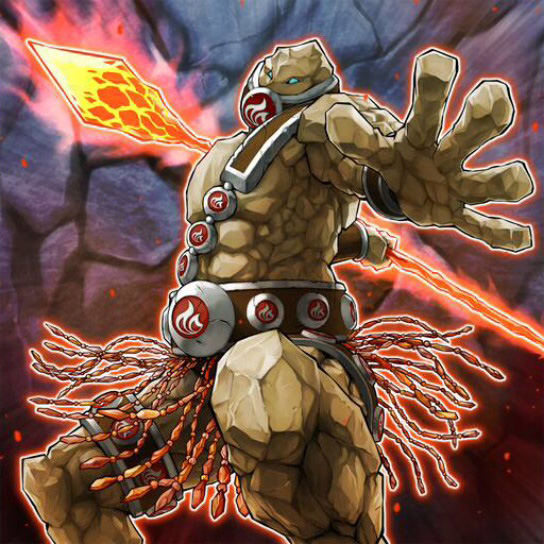 the release of more and more cards in the Laval archetype designed to be useless without Rekindling (Magma Cannoneer cough cough), Lancelord is an example of a good card along those lines, not Kindling-reliant but able to benefit from it. As for the other monster… well let’s just say he is the heart and soul of Lavals. If Handmaiden can be considered the force that begins any combos or anything in general with a Laval variant, cannon is he who makes it happen. Special Summoning a banished Laval may not seem amazing. As you’ll see further below, each Laval build exhibits the amazing characteristics of Cannon in a different light. So we’ll definitely return to his discussion.
the release of more and more cards in the Laval archetype designed to be useless without Rekindling (Magma Cannoneer cough cough), Lancelord is an example of a good card along those lines, not Kindling-reliant but able to benefit from it. As for the other monster… well let’s just say he is the heart and soul of Lavals. If Handmaiden can be considered the force that begins any combos or anything in general with a Laval variant, cannon is he who makes it happen. Special Summoning a banished Laval may not seem amazing. As you’ll see further below, each Laval build exhibits the amazing characteristics of Cannon in a different light. So we’ll definitely return to his discussion.
So now that you have a general picture of how the Laval Tribe works, with all of the different factions and forces at work, let’s hone in on some of the variants I selected to represent the Laval tribe! The first variant is the Pure variant, showcasing the power of the Laval monsters when everything is mixed together. I am positive that this variant will surprise you in its abilities. The second variant is the most commonly known Laval deck, and has actually seen competitive play across the world – Laval Quasar. The third variant, Magma Warriors, showcases the pure strength of the Laval monsters when it is designed to loop through Graveyard, banished, and field. The last variant(s) answers the question I posted early on in this segment – What is the Laval Tribe’s true identity in the frame of the Duel Terminal? You may have already figured it out based on the table of contents, but see if you can figure it out before we get to that segment of the article!
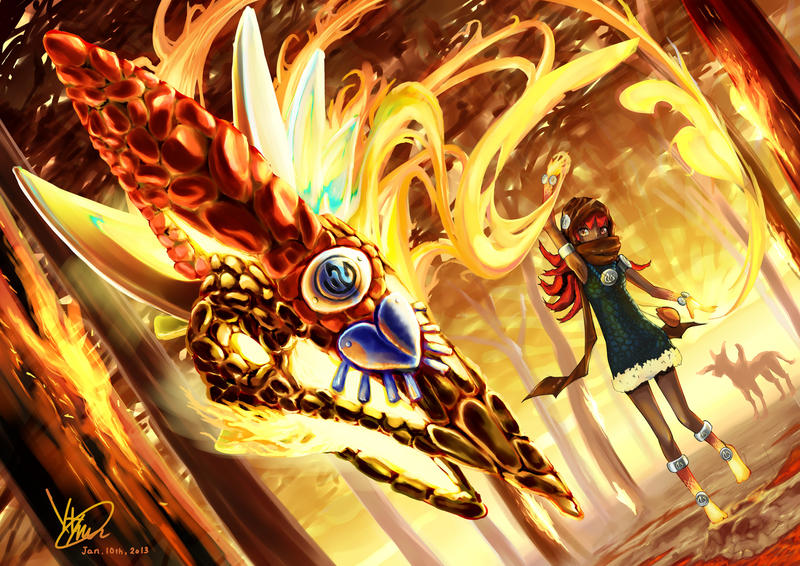
Deck 1: Laval Eruption
Strategy:
Welcome to the first variant of this article, and this one I think may surprise you. Remember how I talked about a ton of different ‘subgroups’ of the Laval tribe and how they all can work together in unison (representing the barbaric nature of the tribe itself)? Well that’s exactly how this first Laval deck works! Before we can dive into the nitty gritty details, let’s talk about the benefit of a build such as this. First off, you have a ton of sustainability to push through the duel, you have tons of opportunities to make advantage out of seemingly nowhere, and your ability to swing out of nowhere for an OTK is unhampered. In fact, I’m even running one more Laval we haven’t discussed yet, to benefit even more from the endless amounts of Grave-filling!
Meet Laval Phlogis. If you’re going to tell me I’m crazy, or that he is useless, just walk away from this variant now. He is in no way Synchro Material, Graveyard material, or even advantage-gaining, so why in the world would I run him? The same exact reason as Laval Forest Sprite actually, except he doesn’t have to go from the field to the Graveyard to give your Laval a boost! This actually gives dumping for Molten a purpose beyond filling the Graveyard – summon something before dumping and you get a free 300 boost. Since you need 3 different names to activate Lakeside, Phlogis really fills a great niche as being that third name when you dump. Also, notice he is a great Level 4 Laval to dump, as you kind of like having Level 4 Lavals banished so you can go into Rank 4 Xyz Summons with Laval Cannon, and it is NEVER worth it to mill Cannon!
Speaking of Cannon, I want to outline the versatility of this deck. You have tons of options, tons of different win conditions. This is the ‘jack-of-all-trades’ Laval variant; it is definitely not the best Laval deck in comparison to the different subgroup-centric variants. But it does have the ability to play out of various situations, it can explode on a dime, it can play a grind game. While it may not be the most competitive, I personally think it may be the best across the board on average – with a Pure variant, there is not half as many ‘you’re going to lose if your opponent flips trap x’ moments. (Like Vanity’s for the Quasar variants). Yes, as any deck that uses the Graveyard, Macro and Fissure can both throw a wrench in your plans, but just remember you still have some plays as Cannon doesn’t give a crap whether or not you have Laval monsters in your Graveyard!
Oh also, before you freak out – I am not running Laval Magma Cannoneer in here. It sucks in any non-quasar variant, even if the variant uses Rekindling. First off, you are throwing valuable cards for pitiful amounts of damage, and secondly, it can’t even trigger Handmaiden when you are discarding away. “But it’s a Level 4 like Phlogis with an effect on the field with 200 DEF!” is a typical response when I say this, but look – you really should hope not to draw into all of your Lavals that love the Graveyard. That just doesn’t work out well for you, no matter which variant you face. Luckily, it is EXTREMELY unlikely to open 3 Handmaiden, thank god.
So let’s check out this variant, shall we?
Completed Deck Example:
You’ve survived Pompeii! At least the first wave of the eruption anyways. Let’s check out what this explosive and powerful build could look like! The following link is a screenshot of my personal Pure Laval variant. It may not be the best build for them, but it can serve as a baseline for your deck construction in the future – http://i.imgur.com/L3hxFxP.png
Discussion:
Alright, now you at least have a picture of the variant to work with. First off, did you notice I’m employing every ‘milling method’ the deck has to its name? If you want to be able to use Burner and Coatl, that is the way to go. Even though Blaster is unreliable, it is a 5-card mill THAT also boosts its own attack AND is searchable by Reinforcement of the Army. Not bad for such a seemingly terrible card. Then again, you do need 1 Laval in your Graveyard first, which is why he is not the main milling method. Anywho, I’m sure you may be puzzled at the Laval Miller. You think either (A) – It is a situational card you think your opponent will never trigger or (B) It is a weak monster with a situational effect that forces you to rely on your opponent. Well I bet I’ll surprise you with how I think – both are 100% correct. It is situational,

there are many ways for your opponent to avoid it. That being said, you are NOT relying upon it as your only method, therefore it is cool. If you consider it to be simply a ‘win more’ card, that is also a factor; however, you probably don’t realize how important a setup Graveyard is for the Lavals. No matter which variant you are running with, everything begins with your Graveyard. Lastly, I run a TON of combos to go into Lavalval Dragun, who truly is a boss of sorts for the deck. No, he doesn’t have high ATK power; No, he doesn’t destroy cards your opponent controls; No, he does not have a win condition. What he does offer is either strategic searching or strategic milling, pick your advantage he gives you.
So right now, you’re probably wondering what happened to Quincy that he included such an uninspired variant into an article, since it just seems like he threw a buncha Laval monsters together and called it a day. Come on, have some faith in me will you? What connection is between the cards in this variant, beyond being Laval cards or support of the theme? If you can’t answer this question, take another look at the deck before you continue reading. You may not have ever been exposed to a ‘Pure’ Laval variant before; therefore, I want you to realize that this is definitely a tuned build: there is a more ‘pure’ build out there! By using the phrase ‘tuned deck’, I mean that while remaining in the world of the ‘pure variant’, I have taken extreme care in choosing which cards to run and which not to run. In other words, I have intentionally pushed most of the support towards one of the engines, in fact, it is the OTK engine of the deck. Every single card in the Main Deck helps to OTK. Every card. Was that how you answered my question? I’m guessing not.
So if I called the main role of the milling engines as ‘setup cards’ before, how in the world can I claim that they help ![]() OTK? Well… It all comes back to one of our Enablers, Mrs. Laval Forest Sprite. Every Laval monster in your Graveyard contributes 200 ATK to EVERY Laval monster you control. So the ‘win more’ aspect of Miller disappears, as resolving his effect is at least 400 more ATK across the board. Adding more connections back, think of how I am going to make Lavalval Dragun in the first place. If you answered Cannon into Forest Sprite, you’re correct. There are definitely other ways to do this summon, but that is the best by far. Yes, in that case the only Laval to get the boost would be Dragun itself, but this is the PERFECT opportunity to take advantage of just how much your two inherent summoners can improve the deck. Let’s talk some realistic combos that occur all the time in a variant like this!
OTK? Well… It all comes back to one of our Enablers, Mrs. Laval Forest Sprite. Every Laval monster in your Graveyard contributes 200 ATK to EVERY Laval monster you control. So the ‘win more’ aspect of Miller disappears, as resolving his effect is at least 400 more ATK across the board. Adding more connections back, think of how I am going to make Lavalval Dragun in the first place. If you answered Cannon into Forest Sprite, you’re correct. There are definitely other ways to do this summon, but that is the best by far. Yes, in that case the only Laval to get the boost would be Dragun itself, but this is the PERFECT opportunity to take advantage of just how much your two inherent summoners can improve the deck. Let’s talk some realistic combos that occur all the time in a variant like this!
Cool Combos:
Situation A:
Consider the following combination of cards (WITH NO OTHER SETUP): Molten Conduction Field, Reinforcement of the Army/Laval Cannon, and Laval Coatl/Laval Burner:
- Use Molten, sending Laval Lakeside Lady and Laval Volcano Handmaiden to the Graveyard
- Maiden activates, sending another, which sends another, who then sends Laval Forest Sprite to the Graveyard
- Special Summon your Coatl or Burner (or multiple if you have them in hand)
- Banish Lakeside and Forest Sprite from your Graveyard, then destroy a set card your opponent controls.
- Activate Reinforcement, adding Laval Cannon from the deck to your hand, then summon it.
- Special Summon Sprite with its effect, then Synchro Summon Lavalval Dragun
- Forest Sprite activates, giving your two (or more) Laval monsters +1000 ATK.
- Activate Dragun, adding then discarding Laval Phlogis; your two (or more) Laval monsters gain 300 more ATK.
- End Result: 3800 Dragun, 3400 Burner (2600 if Coatl), 6 Lavals in Grave, 1 Lakeside banished, 1 set card destroyed.
Note: This situation assumes that it is the first turn of the duel and you haven’t had the opportunity to fill your Graveyard with anything. Take for example if you had 2 Molten Conductions, and that’s an additional 800 Damage on your side of the field (an 8000 damage OTK with EITHER Coatl or Burner). And hah, you don’t even need Kindle! Still think Laval are pushovers?
Situation B:
Consider the following combination of cards (WITH NO OTHER SETUP): Molten Conduction Field, Rekindling, and Laval Cannon.
- Begin similarly, using Conduction to mill Phlogis, 3 Handmaiden and Lakeside from your deck to the Graveyard.
- Banish Lakeside and Phologis from your Graveyard, then destroy a set card your opponent controls.
- Summon Cannon, special summoning back Phologis.
- Activate Rekindling
- [OPTION ONE begins here. See #11 for OPTION TWO] summoning 2 Handmaiden and 1 Forest Sprite from your Graveyard
- Synchro Summon Laval Dual Slasher by using Cannon and Handmaiden.
- Synchro Summon Dragun by using Phlogis and Forest Sprite.
- Phlogis and Sprite activate, boosting all of your Laval monsters by 1300 ATK each.
- Activate the effect of Dragun, adding then sending Phlogis, boosting your Laval monsters by another 300 ATK.
- End Result – 1 1600 ATK Handmaidens, 1 4100 ATK Dragun, 1 3900 ATK Slasher (who can double atk if your opponent has a DEF monster), 6 Laval monsters in the Graveyard, 1 set card destroyed.
- [OPTION TWO begins here] summoning 3 Handmaiden from your Graveyard.
- Synchro Summon T.G. Hyper Librarian by using Cannon and a Handmaiden.
- Synchro Summon Lavalval Dragon by using Handmaiden and Phlogis, then draw 1 card.
- Activate the effect of Dragon, returning 2 Handmaiden from your Graveyard to the deck to bounce a card.
- Synchro Summon Dragun by using Dragon and your last Handmaiden, then draw 1 card.
- Activate the effect of Dragun, adding then sending 1 Handmaiden from your Deck to the Graveyard.
- Maiden sends another maiden, then it sends either another Lakeside or a Phlogis.
- End Result – 2 Draws, T.G. Hyper Librarian, Lavalval Dragun, 7 Laval monsters in the Graveyard, 1 set card destroyed, 1 card bounced.
Note: I chose this scenario because I believe it adequately describes a ‘perfect scenario’ for the Pure Laval variant that can’t quite be done with other variants. Your ‘God Hand’ doesn’t actually lead into the same play every time, YOU HAVE VERSATILITY. It either lets you OTK (and then some) then and there, or it lets you begin snowballing advantage. Also, the first option should go into the Dragon -> Dragun play if their OTK fails, that way their Handmaidens are not banished by Rekindling at the EP. Also, similar to Situation A, these plays occur WITHOUT taking into consideration anything that may have happened prior in the duel!
PyroTrapstic Flow:
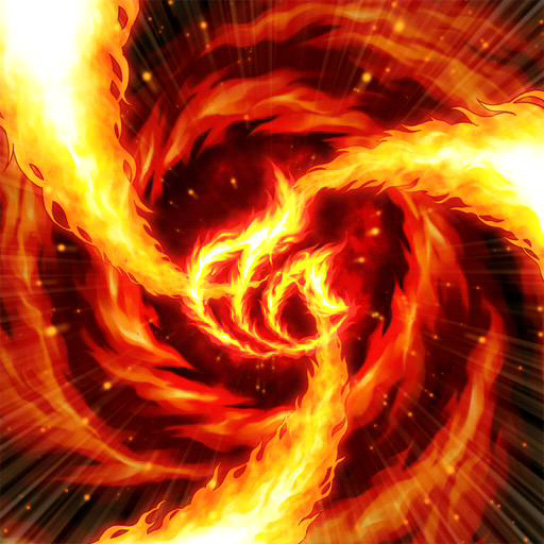
Now that you’ve seen some combos, (Yes, I realize there are a ton more, but I have no intention of boring you to death with the endless amount of Laval combos that exist) it’s time we discussed the elephant in the room – Laval Trap cards. There are pretty much 4 of them that I will eventually talk about over the course of Decks 1,2 &3, and each has their specific place to shine. I’m only going to talk about the first two here, but read further in this article for a continuation of this discussion! Burgeoning Whirlflame is the Counter Trap for the Laval tribe, and it would be an understatement to say it leaves something to be desired. The fact of the matter is – you use Whirlflame over Wiretap or any other similar Counter Trap that negates Trap cards because it is recursive. By recursive, I mean it comes back. Also, it happens to be an amazing card at setting up Laval Cannon when Lakeside isn’t in your Graveyard or your opponent doesn’t have a set card to destroy!
On the other hand, Molten Whirlwind Wall is AMAZING. If you think this card is just an unsearchable Fire
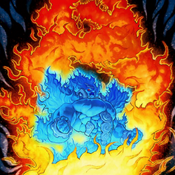
Formation – Tenki that doesn’t add a monster to hand on activation, you are thinking about it wrong. 100 ATK per Laval in your Graveyard may not seem like it is that much, but let me tell you – it adds up quick. If you had Molten activated during Situation A above, that’s an additional 600 ATK for each Laval, turning the near OTK with Burner into an actual OTK. If you think that Molten is just a ‘win-more’ card, you are wrong. It lets you OTK when the situation shouldn’t actually happen. Yes, alongside all of the other Laval cards, it is not the best thing to topdeck when in a pinch. But that risk is worth the benefit when your Laval Cannon can run over El-Shaddoll Winda or any of your Laval monsters throws a wrench in the way of a Burning Abyss duelist. It happens way too often.
I’ll close this segment of the article with one plea – don’t take my word as the absolute truth on this pure Laval build. Quite frankly, the Laval tribe is finicky, and it is an archetype that comes down to player preference. A lot of players do not like the feeling of not being 100% in control of their fate or their duel, but if you are a risk taker who still likes to play conservatively, Laval just may be the tribe for you. If you learn nothing more about this variant or even the Laval Tribe in general, please try them out for yourselves to see just how unique of a feeling it is to play something so wild and powerful as a Pure Laval deck. I’m sure you’ll enjoy yourself. Anyways, next up on the chopping block is the Magma Warriors! I like to consider this variant as a watered down Pure build that finds its way halfway between a Quasar variant and a Pure variant. It has amazing plays, and offers a considerable grind game that is unparalleled in the DT world (beyond Gusto of course). Let’s jump into the volcano and duke it out with the warriors!
Deck 2: Magma Warriors
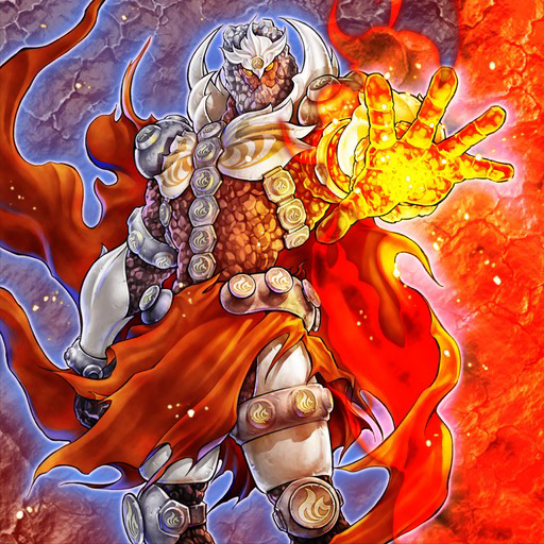
Strategy:
It’s time to pull out your best Blaster and bring the true leader of the Laval tribe to the party. Don’t give me that blank stare, of course this build is all about Laval Judgment Lord! Well not all about him, but all about abusing his presence is a fairly accurate statement! If I told you that Judgment lord is amazing, I would bet you $10 that you would just burst out laughing. See, you’re even doing it now. Well I don’t care, cause Judgment is amazing in a deck that is built to abuse him. While this build is now only a shade of its past version when the Dragon Rulers were in their prime (I wish Seven Star Sword leaves the Limited section soon), it still has quite a bit a power and only really lost the extra draw power and 2 extra Blasters. Back in the day, it was the ‘Rank 7’ Laval variant that had some neat plays that normal Drulers didn’t normally have access to, but now, it just has a really cool way of keeping advantage and putting large amounts of pressure onto the opponent. First off, Cannon and Judgment are best friends. A 1600 and a 2700 monster off of a single Normal Summon is NOTHING to scoff at, especially when the monster that enables that play is searchable. Top that off with an off-theme support card – Blue Flame Swordsman – and you got yourself a really neat Laval deck. It isn’t specialized to OTK, it isn’t specialized to Synchro for days, but it is optimized to play the grind game. 
Before we move forward with discussing this deck, let’s define the term grind game, as you probably have seen it in other contexts, but not for the Laval tribe unless you are highly experienced with the deck. Typically, a grind deck tries to run as many counters as possible so that they can literally stop everything their opponent attempts to play, until they run out of options and your small pokes can destroy the opponent. Generally, grind decks are good at keeping advantage and/or gaining it, but their downside is their lack of OTK potential. Switching gears, every single player that has ever attempted to learn how to play Laval competitively knows about what a ‘grind game’ is to a Laval player – outplaying your opponent and figuring out how to survive until you draw Rekindling. Yes, bad hands happen, and this situation occurs quite a bit in many streamlined Laval variants. So instead of trying to avoid the grind game which is most Laval duelist’s worst nightmare, the strategy and deckbuilding theory behind this sort of variant is to make that grind game a specialty that it is good at, rather than being an issue.
Now that we’ve settled what its supposed to do, let’s introduce you to the deck so you can see for yourself and start making your own judgments! Get it, Judgments? … no? (sadness)
Deck Example:
You’ve survived Mount Pinatubo! Somehow… as that was a really, really powerful eruption. Anyways, let’s check out what this warrior-centric and grind-game focused deck would look like. The following link is a screenshot of my personal Magma Warriors variant. It may not be the best build for them, but it can serve as a baseline for your deck construction in the future – http://i.imgur.com/tdOuN5h.png
Discussion:
Where do I begin? Let’s start with some of the monsters that make this sort of variant worth it. First off, we got our 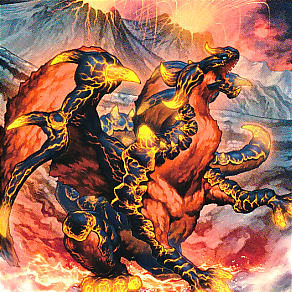 Blaster, Dragon Ruler of Infernos. While Blaster is pretty much mandatory in any Laval deck as a way to have an easy-to-summon powerhouse to stall when necessary with a large body, he plays an even bigger role, one that I alluded to earlier. Blaster allows for Rank 7 Xyz Summons, and he is exceptionally easy to keep bringing back in this Laval variant as a lot of your go-to Synchro monsters are Dragon-type. Make sure you notice, if you haven’t already, that this variant does not need to have Judgment Lord banished to turn Cannon into a Rank 7 with Blaster – If you Special Summon back Lakeside with cannon, you can then Synchro Summon Level 7, THEN go into your Rank 7. While it is not as streamlined or advantage-conscious, it can sometimes be helpful to bounce away a Special Summoned monster with Moon Rose before going your Xyz play. Note that this sort of play is just your End-Game, you do not need to feel obligated to keep trying time and time again to summon big things.
Blaster, Dragon Ruler of Infernos. While Blaster is pretty much mandatory in any Laval deck as a way to have an easy-to-summon powerhouse to stall when necessary with a large body, he plays an even bigger role, one that I alluded to earlier. Blaster allows for Rank 7 Xyz Summons, and he is exceptionally easy to keep bringing back in this Laval variant as a lot of your go-to Synchro monsters are Dragon-type. Make sure you notice, if you haven’t already, that this variant does not need to have Judgment Lord banished to turn Cannon into a Rank 7 with Blaster – If you Special Summon back Lakeside with cannon, you can then Synchro Summon Level 7, THEN go into your Rank 7. While it is not as streamlined or advantage-conscious, it can sometimes be helpful to bounce away a Special Summoned monster with Moon Rose before going your Xyz play. Note that this sort of play is just your End-Game, you do not need to feel obligated to keep trying time and time again to summon big things.
Moving along in the world, we come to Blue Flame. Now Blue Flame activates whenever your opponent destroys him, which is already a fairly iffy activation, but its ability to Special Summon back Judgment from the Graveyard cannot be stated enough. If you’re pushing for a grind game, You want to be able to hide behind sets. With Raigeki running about, your set monsters are more prone to destruction now than ever before. The big thing about summoning back a Judgment? A lot of decks atm need an effect or a trap card to get over a 2700 ATK monster nowadays. The ‘pure power’ archetypes of the past have gone extinct as the advantage-driven archetypes have taken center stage. Burning Abyss has to rely upon a trap card or Acid Golem to get around Judgment (soon to add Virgil to that list). Satellar have to use a valuable destruction from Delteros or rely upon a mass field wipe by Triviel, as generally they won’t try to run over a set monster before Xyz’ing. But even if they do just end up Xyz Summoning – You just delayed them for a turn and forced them into an Xyz that has to either even itself out for a +0 OR get rid of the chance to go into a lovely Xyz that can steal even more control away over the duel. Power monsters have a place – it’s why the Qliphort archetype is going to make a splash upon its arrival.
Now we’ve come to Cannoneer. Yes, I realize what I said earlier, but I have a counter already prepared. In this variant, you are going to have FIRE monsters in your hand when you draw Judgment that you are just better off sending for a bit of burn. Also, he adds more oomph to a Rekindling play, as your grind game is all about waiting and stalling until all the pieces fall into place for a perfect strike, while not leaving you completely useless during that time. Rekindling can win games, I would be a fool not to say that. What I will say is that it is not this deck’s only chance of winning, regardless of popular belief. In fact, extend that to any Laval variant, beyond Deck 3 in this article – Kindling is amazing, but Laval is not a one-trick pony! It is a jack-of-all-trades; it’s time you started treating it as such.
Volcanic Versatility at its Finest:
Now is where the decklist starts getting wonky, because the spells and traps you decide to run decides what you want to grind into. Let me break down some options for you:
Each variant listed below has a completely different playstyle than the last that I am not going to dive too much into with this guide. No joke, it would literally make this article be 10,000 words if I described everything, TO THIS POINT of the article, and we’re not even halfway done with the decks featured in this article! I will complete a short strategy guide below each in bullet point form, so you at least get the gist.
- If you wanted to go with a typical Synchro-looping variant with a full grind setup, you can do that by replacing all
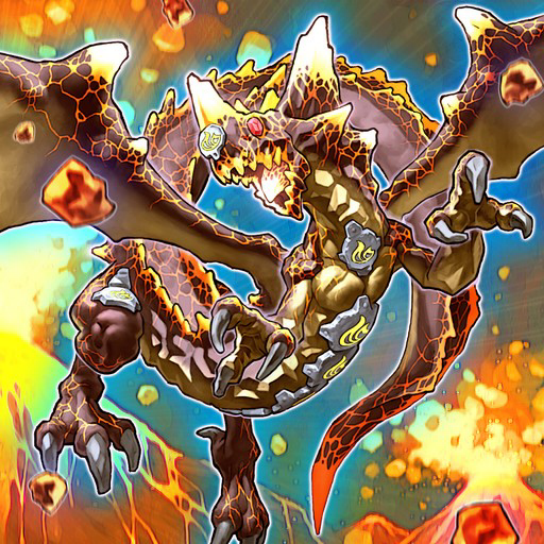 of the utility Spells with Traps.
of the utility Spells with Traps.
- With a heavy trap lineup half devoted to defense and partly devoted to helping you go offensive, you can wait to loop: Grind2
- Benefits: Lots of draws from T.G. Hyper Librarian to seal your win after you loop.
- Weakness: Extremely vulnerable to disruption if Trap Stun is not at the ready
- Considered a more ‘refined’ Laval variant, due to being less go big or go home than a normal Quasar Variant. You have to play passive and only rely on basic plays I outlined earlier with this deck, otherwise you will burn out before you can win.
- If you wanted a more ‘high-risk, high-reward’ variant, you could go with a Burn version. Since you are running so many Warrior-types, you can include Battleguard Howling and Magic Cylinder on top of Ceasefire and
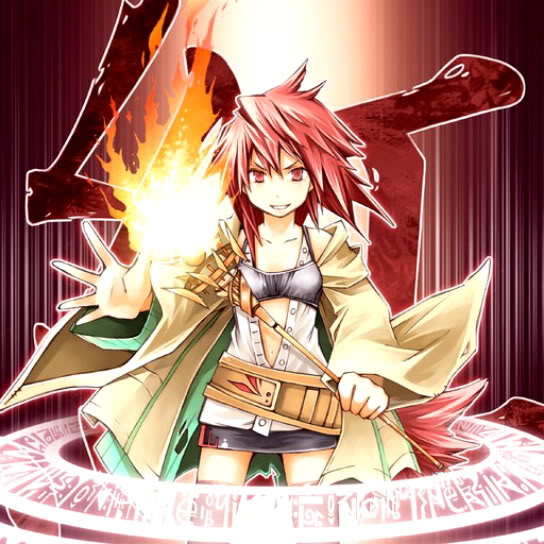 Spiritual Fire Art – Kurenai.
Spiritual Fire Art – Kurenai.
- With a very light chainable trap lineup, it is devoted to burn damage to augment the damage from direct attacks: Grind3
- Benefits: Tons of Damage. Like this is Satellarknight-Burn amounts of damage. If you get a direct attack in with Cannon and Judgement, that’s 7000 damage combined with Kurenai. 2 cards for 7000 damage – Any day of the week.
- Weakness: Less of a grind and more of a “Let’s burn till we fall” kind of deck
- Considered by many not even to be a variant fit to bear the name of ‘Laval’, I’ve brought back the concept in the hopes that someone will run with it and make it into something even more amazing than it already is.
- If you wanted to go with a more recursive version, constantly bringing back your monsters and taking advantage of their innate power, option three is the one I featured above.
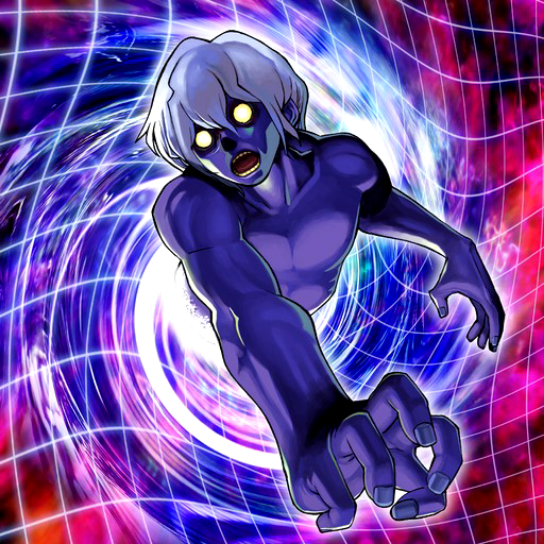
- Very large monsters, good ability to grind without having little aggressive presence on the opponent: Grind1 (same as the example deck I listed above)
- Benefits: More ways to bring back your banished Laval monsters, more ways to Xyz Summon, more combos with Dustflame.
- Weakness: Lots of hand-discarding. Lots. You are going to have hefty losses in advantage from the hand to do your OTKs.
- Personally, I’ve had a ton of fun duels using this variant, which is why it got the spotlight here. Your opponent waits until they think you invested everything, bombs your field, then you follow with a Judgment and a Blaster for game. It happens all too often.
I’ve hopefully introduced you to the possibilities of the ‘Grind Lavals’. Just take it all in, we’re only finishing the 2nd official deck of this article, and you’ve already seen 4 different example decklists… Yes, there is so many more coming your way with the last two official decks! I’m sorry, but I felt the need to go all out just to prove how amazing the Laval tribe is, when it isn’t relying upon Kindling! You’ve seen Burn, Synchro Centric, Xyz Centric, OTK Centric… and we’re just gonna keep adding to that. But before we can move on, we gotta keep talking about our dear Laval Trap cards!
Pyrotrapstic Flow P2:
Might as well explain my choice of name for these sections before we continue with Dustflame Blast. If you aren’t aware, the most dangerous part about a volcanic eruption isn’t necessarily the lava, but rather the explosion and release

of hot gas and ash flying down the side of a volcano during a composite volcano’s eruption, and yes, this insanely high-temperature heat cloud is called the pyroclastic flow of the volcano. It is the most dangerous part, and quite frankly, Dustflame just might be the most dangerous aspect to the Laval tribe. Why? Because it is a mass destruction trap that is chainable and does not target. It is effectively a Artifact Sanctum that doesn’t behind the Level 5 body, it just sets up your banished pile perfectly for Cannon -> Judgment -> 4100 direct damage. Not bad for a deck that isn’t even considered a rogue pick. Also, take note that it even gets more powerful as the duel extends. Sure, you may not be able to do much with a Dustflame with only 1 Laval in your Graveyard to fuel it, but as you fill that Graveyard, it is amazing in variants such as Grind because you don’t require a specific large number of Lavals in the Graveyard, because you simply do not run Forest Sprite!
I’ll close this segment of my Laval Article with a quick note in summary. We just saw 3 completely different decks with 3 completely different win conditions, all out of a single archetype. A single archetype built to try to avoid the worst part of its duels. I know I’ve hit this nail multiple times by now, but look at the versatility of this tribe. Look what it can do, what it can become. I just find it such a shame that people pigeonhole this deck into being a one trick pony with Quasar. As quoted from one of my favorite TV shows: “When you base your expectations only on what you see, you blind yourself to the possibilities of a new reality.” It’s time to open your eyes and see the evidence in front of you that the Laval are more. That being said, we’re going to be talking about the currently widespread use of the Laval in the form of spamming Quasar day and night; however, you may be quite interested with HOW it is built rather than WHAT it can do 😛 Let’s take a look, shall we?
Deck 3: Laval Quasar

History:
Alright, so I’m sure you are all familiar with Laval Quasar, but for the few who aren’t – the strategy and intention behind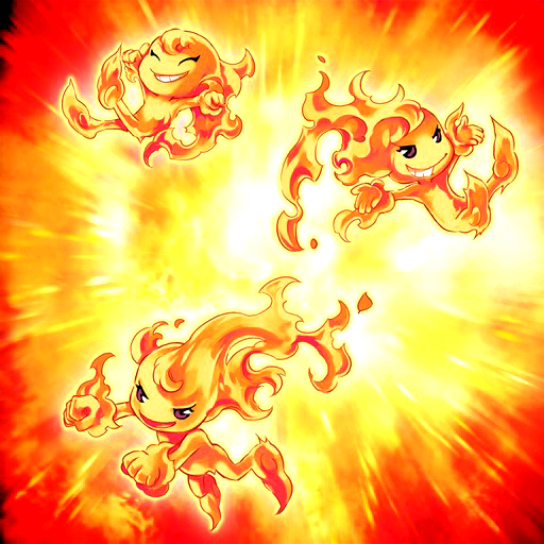 the deck is simple. Get Rekindling, Molten Conduction Field & a Level 1 non-tuner in your hand, and you can turn that into Quasar. Yes, it is literally that simple. Molten sends 3 Laval Volcano Handmaiden and 2 Laval Magma Cannoneer, and since all 5 of those monsters have 200 DEF… yeah, I’m sure you get the picture by now. So how would you finish fleshing out this sort of variant? That was the question weighing on the minds of deck builders around the world. How would you streamline the deck so that you consistently can make Quasar? Back in the day, summoning Quasar was effective game. Synchrons actually held a small piece of the spotlight prior to the emergence of Laval Quasar, as they could summon out the massive Level 12 behemoth, but Laval definitely pushed them aside with a 3-card Quasar combo. Fact of the matter is, if you made Quasar turn 1, you had a high chance of winning. If you made Quasar turn 2, and your opponent hadn’t summoned or set any monsters, you pretty much won the duel. So the real deck building question becomes – how do you streamline the deck to ensure summoning Quasar as early as possible?
the deck is simple. Get Rekindling, Molten Conduction Field & a Level 1 non-tuner in your hand, and you can turn that into Quasar. Yes, it is literally that simple. Molten sends 3 Laval Volcano Handmaiden and 2 Laval Magma Cannoneer, and since all 5 of those monsters have 200 DEF… yeah, I’m sure you get the picture by now. So how would you finish fleshing out this sort of variant? That was the question weighing on the minds of deck builders around the world. How would you streamline the deck so that you consistently can make Quasar? Back in the day, summoning Quasar was effective game. Synchrons actually held a small piece of the spotlight prior to the emergence of Laval Quasar, as they could summon out the massive Level 12 behemoth, but Laval definitely pushed them aside with a 3-card Quasar combo. Fact of the matter is, if you made Quasar turn 1, you had a high chance of winning. If you made Quasar turn 2, and your opponent hadn’t summoned or set any monsters, you pretty much won the duel. So the real deck building question becomes – how do you streamline the deck to ensure summoning Quasar as early as possible?
This question is a ton more interesting than the actual deck itself, so I’m going to begin this section of the article by analyzing it based on actual data. Have you ever noticed that decks that appear in the OCG are always slightly different builds than in the TCG? The separation of the Forbidden / Limited Lists has only exaggerated the differences; so it should make my job even easier proving my point. Before the split, there was one deck that gained popularity in both areas of the world… despite having very different ideas of what the ‘best build’ for such a variant would be. If you didn’t guess why I am bringing this up, the variant I am referencing is actually Laval Quasar.
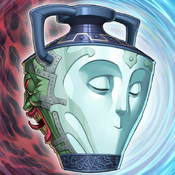
The TCG duelists and the OCG duelists differed in how to build Lavals in quite a few big ways. First off, since the OCG actually had the deck released and legal well before the TCG, the OCG duelists topped with varying builds. The potential to make Quasar was there when the deck first started getting popularity; but as with any deck first introduced to a region, the builds that seemed to be doing the best varied by large margins. There were builds running a ton of stall, builds running trap cards to hold off the opponent until they could draw into their combo, and there were definitely builds that were seen as being ‘engines of consistency’. Those in the latter group were ridiculed by folks in the TCG from the start, as some were running cards such as Pot of Duality, which was apparently heresy in a combo deck that special summoned in one turn. Those in the OCG must not have read all of the topics and all of the forum posts concerning how ‘terrible’ their version of Lavals were, because as time wore on, the consistency-heavy variant kept becoming more and more popular! Even after Blaster, Dragon Ruler of Infernos was released which completely changed the deck for the better, cards such as Pot of Duality were continued to be run, and even more consistency cards were added such as Gold Sarcophagus. Yet again, the TCG was slow to agree with their choices. You would have thought that they would have learned by then, as the Laval Quasar variants were continuing to crop up in the OCG on a consistent basis.
The history of the Laval Quasar variant in the TCG is less of a tale of adaptation and perfecting a new deck, and more of a tale of trying to find the fastest Quasar Turbo variant that existed. Just making sure you realize, the OCG had a ton of time to mess around with the full troupe of Laval support for quite some time before Blaster came to revolutionize the deck into something better. The TCG had nothing close to that – Blaster was released a mere 3 weeks following the arrival of Hidden Arsenal 7 bringing the all-important Molten Conduction Field to the TCG and making the Quasar play 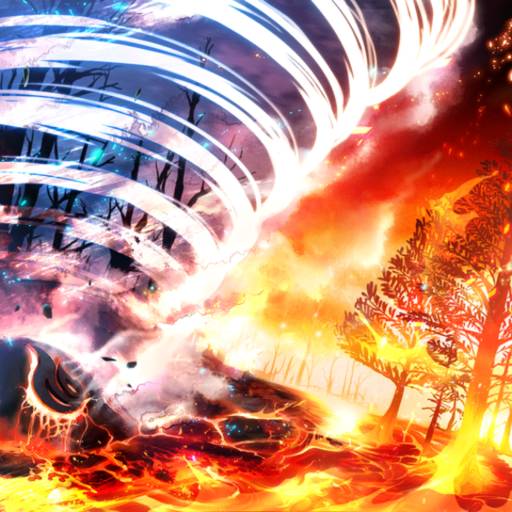 possible. Therefore, with the deck already having moved on from the original Laval Quasar builds to the Blaster variants, the TCG followed as normal an attempted to copy the OCG Laval Quasar variants faring well… Lo and behold, TCG players united in a complete ignorance of the most refined OCG variants, instead choosing to run turbo Laval Quasar, since everyone had been pointing out the flaws of the consistency-driven pre-Blaster OCG variants. Fast-forward 21 days. The TCG variants were working – if you throw enough chips into one basket, you’re bound to eventually win out. But now with the new pack Lord of the Tachyon Galaxy, the meta literally underwent a complete meta shift, turning the format on its head. Remember, LTGY was the official release of both the Dragon Rulers AND the most feared Spell Card at the time, Spellbook of Judgment. TCG Laval Quasar duelists kept trying to force their deck through the difficult format renowned for its two equal decks with the lockdown known Evilswarm tagging along for the ride; however, they did not have months of iteration to build off of with new variants to counter the newly developed meta. Adaptations to the new format for Laval duelists were extremely slow due to this reason alone – It took until the end of the format for Laval players to finally start accepting some of the trends embraced by the OCG.
possible. Therefore, with the deck already having moved on from the original Laval Quasar builds to the Blaster variants, the TCG followed as normal an attempted to copy the OCG Laval Quasar variants faring well… Lo and behold, TCG players united in a complete ignorance of the most refined OCG variants, instead choosing to run turbo Laval Quasar, since everyone had been pointing out the flaws of the consistency-driven pre-Blaster OCG variants. Fast-forward 21 days. The TCG variants were working – if you throw enough chips into one basket, you’re bound to eventually win out. But now with the new pack Lord of the Tachyon Galaxy, the meta literally underwent a complete meta shift, turning the format on its head. Remember, LTGY was the official release of both the Dragon Rulers AND the most feared Spell Card at the time, Spellbook of Judgment. TCG Laval Quasar duelists kept trying to force their deck through the difficult format renowned for its two equal decks with the lockdown known Evilswarm tagging along for the ride; however, they did not have months of iteration to build off of with new variants to counter the newly developed meta. Adaptations to the new format for Laval duelists were extremely slow due to this reason alone – It took until the end of the format for Laval players to finally start accepting some of the trends embraced by the OCG.
I know the above may have seemed like a complete tangent, but I feel like it is important for figuring out just how we should tackle the Laval Quasar in the format of today. Sometimes, it really is helpful to see just how different players approach a problem when creating a new deck. Remember, these duelists were pioneers of the Laval archetype, both those in the OCG and the TCG saved the Laval tribe from being shuffled into the pile of misfit archetypes alongside many decks who never got a chance in the meta spotlight. I know I can never do this whole entire point justice in a small section, but I think we can generalize the above situation and take a stab at describing that actual differences between TCG and OCG deck building theory.
TCG vs. OCG Mindset:
Since the dawn of competitive play and the rise of a diverse card pool, deck building has been an insanely difficult thing to master. The absolute best versions of decks come after weeks if not formats of testing, refining, and alterations. And of course, the decks are constantly evolving. Every single user trying to create their best version of a specific deck is going to try different tech options in an attempt to take their opponent by surprise. (TCG Example: Vanity’s Emptiness in the March 2013 format anyone?). In the TCG, before the exact deck builds start constantly changing with innovating techs being added to the mix, all of the different builds are normally pretty similar until after a couple of major events after a product release. In the past, this was due to the fact that the OCG players had already done the experimenting, and the TCG could see what they had come up with and used their final point as our starting point. So if the OCG players eventually came up with their best versions, why would the TCG versions ever change? If the TCG and OCG mindsets on a specific deck was the same, it would be played the exact same way in both regions. This may be a limited point of view, as world premieres definitely have an impact in the TCG (Burning Abyss anyone), but it is pretty factual. The stereotype running around has even become OCG players are more creative than TCG players as a result of this phenomenon.
But as I said, the TCG versions actually do change over time. If the OCG versions were perfect as OCG players would like us to believe, then the TCG adaptions would never change. My claim is that the TCG version of a specific deck evolves into a deck that fits the TCG style. Before I can prove that, what even is the TCG style. The TCG has always been a format and had decks that revolved 100% around card advantage, duelists in TCG formats like to make plays to either gain advantage or reduce their opponent’s resources. In the OCG, decks didn’t quite have this purpose, not even close. In the OCG, decks have to be able to OTK and excel at making OTKs in order to do well. For example, did you ever see Frog Monarchs do anything in the OCG, ever? Sure, it wasn’t the absolute best in the TCG, but alongside Lancer Frogs, both decks saw considerable amounts of play over the years as rogue variants. Both of these frog variants are all about holding their advantages and gaining more whenever they have the chance, but neither really had much of a shot at making OTK plays outside of random Diagusto Phoenix abuse scenarios. As another example, just look at the Laval Quasar deck, since this is a Laval guide after all. The OCG built their deck to OTK – gain resources and organize everything you need before going in for the kill with Quasar. The TCG playerbase built their deck with minimal defenses, ignoring any potentially dead cards such as Duality for when they do decide to OTK. Also, the TCG playerbase didn’t like the idea of top-decking Duality AFTER your initial Quasar play kicks the bucket (I’m talking right after Blaster was released, so before builds were optimized). Because even if you did get lucky and pull another Rekindling, you would have to wait another turn. The OCG, they didn’t care about that, as they are in an OTK-driven format. If their OTK fails, they know their opponent will have a chance to perform theirs. That’s also why the TCG Spellbook build began to differ so much from the OCG version as the format dragged on: the Level 4 version became popular in the TCG because the TCG players preferred the additional advantage ceiling, while the OCG players avoided that variant since it removed the possibility of OTKs. Quick note, just take a few mental notes on the differences between two competitive Laval Quasar variants (AUGUST/SEPTEMBER of 2013), and see if you can guess which topped in the TCG and which topped in the OCG: Vartiant One | Variant Two! In a more general sense, the OCG mindset can also be interpreted as being an extension of the innovation of tech cards in the TCG. The OCG players simply experiment with entire new deck builds instead of experimenting with single tech cards.
So where does that lead us now, how does that entire paragraph even help us? If you want to become a better deck builder, you have to realize that there are many different ways of building and constructing a deck. You could focus on the OCG mindset of trying to take your opponent by surprise, or you could choose to deck build with the more traditional TCG mindset of including cards and engines that are tried and proven. But I’m going to say this right now, you are NOT going to be at either end of the spectrum by the time that you determine your own deck building mindset. The TCG and OCG mindsets are just the exaggerated trends that are more prevalent. For example, I am extremely close to the full OCG mindset; however, I still include many proven options, especially in the side deck. Hopefully with just my little summary, you got the chance to learn something new about your own deck building style, but if you’re just waiting for me to get to the modern Quasar variant, then let’s just move along.
Time to Construct:
So since I just spent a decent chunk of time describing how you should be thinking of building your own deck, I am not going to go into how I think the deck should be built, because that’s your job. I am simply planning on helping you to walk through the process and throw tons of card names at you. That being said, let’s talk about some different ways you can approach the Laval Quasar variant. First off, you need a core of Rekindling, Soul Charge, Molten Conduction Field, Laval Volcano Handmaiden, Laval Magma Cannoneer, and Blaster, Dragon Ruler of Infernos. From there, you may want to add some additional Laval cards to make the most out of running a Laval engine. Cards such as Laval Lakeside Lady, Laval Cannon, and sometimes even Laval Forest Sprite is fair 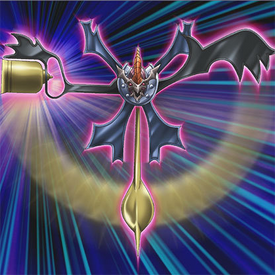 game. Then after those basics, you absolutely need a way to make Formula Synchron with one of your Handmaidens, so a Level 1 non-tuner or a few is a must. Battle Fader, Swift Scarecrow, Scapegoat, Boost Warrior, even their last theme specific Spell card, Searing Fire Wall, works as the Level 1 non-tuner. Each card in that list has a ton of different positives and negatives, and it actually says a lot about you as to which you choose. Fader is used mainly by greedy players who want to have a Level 1 that blocks an attack AND doesn’t use the Normal Summon (Cannon followup for days), Swift is run by realists who know that it is harder to stop, Goat is the flexible choice for the player that likes to have offensive and defensive uses for each card, Boost is used by those who like to overextend but have options, and lastly Fire Wall is for those who want defense, but want to be able to control their mass token summoning. Remember, all of these options are just talking about what has to happen before you even touch the other tech cards to flesh out your deck!
game. Then after those basics, you absolutely need a way to make Formula Synchron with one of your Handmaidens, so a Level 1 non-tuner or a few is a must. Battle Fader, Swift Scarecrow, Scapegoat, Boost Warrior, even their last theme specific Spell card, Searing Fire Wall, works as the Level 1 non-tuner. Each card in that list has a ton of different positives and negatives, and it actually says a lot about you as to which you choose. Fader is used mainly by greedy players who want to have a Level 1 that blocks an attack AND doesn’t use the Normal Summon (Cannon followup for days), Swift is run by realists who know that it is harder to stop, Goat is the flexible choice for the player that likes to have offensive and defensive uses for each card, Boost is used by those who like to overextend but have options, and lastly Fire Wall is for those who want defense, but want to be able to control their mass token summoning. Remember, all of these options are just talking about what has to happen before you even touch the other tech cards to flesh out your deck!
With such a focused variant, you can never have enough cards rushing to get you to your Rekindling or Soul Charge, therefore you can go for a super aggressive build, relying on Level 1 ‘hand traps’, so they can protect you while doubling as Synchro fodder OR you can choose a more defensive route to grind games until you get your Kindle for Quasar. Now you don’t have to throw your whole hand into one side of that choice, but most Quasar builds generally 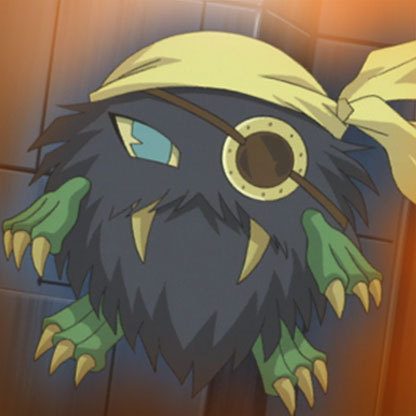 work best if you do. Either way, some awesome tech options for speeding your way towards Rekindling include: Kuribandit, Cardcar D, Maxx “C”, Upstart Goblin, Reckless Greed, Pot of Dichotomy, and the aforementioned Gold Sarcophagus. Next, you have to decide what kind of duelist you are. Are you a conservative player, meaning you will only go all in when the moment is right, or are you a player that throws everything you got at the opponent and hoping they have bluffs? If you are part of Group 1, you are going to want to load up on more backrow control/negation such as: Trap Stun, Flamvell Counter, Wiretap, Mystical Space Typhoon, Artifact Engine, Dustflame Blast, Royal Decree, and maybe even the Laval’s own counter trap, Burgeoning Whirlflame. If you are part of Group 2, you will definitely want to load more towards the recovery department, so you have as many chances to stay in the game if your Quasar attempt fails, so you should think of stuff like running : 3 Laval Cannon, Reinforcement of the Army, The Warrior Returning Alive, D.D.R. – Different Dimension Reincarnation, Burial from a Different Dimension, or maybe even Call of the Haunted.
work best if you do. Either way, some awesome tech options for speeding your way towards Rekindling include: Kuribandit, Cardcar D, Maxx “C”, Upstart Goblin, Reckless Greed, Pot of Dichotomy, and the aforementioned Gold Sarcophagus. Next, you have to decide what kind of duelist you are. Are you a conservative player, meaning you will only go all in when the moment is right, or are you a player that throws everything you got at the opponent and hoping they have bluffs? If you are part of Group 1, you are going to want to load up on more backrow control/negation such as: Trap Stun, Flamvell Counter, Wiretap, Mystical Space Typhoon, Artifact Engine, Dustflame Blast, Royal Decree, and maybe even the Laval’s own counter trap, Burgeoning Whirlflame. If you are part of Group 2, you will definitely want to load more towards the recovery department, so you have as many chances to stay in the game if your Quasar attempt fails, so you should think of stuff like running : 3 Laval Cannon, Reinforcement of the Army, The Warrior Returning Alive, D.D.R. – Different Dimension Reincarnation, Burial from a Different Dimension, or maybe even Call of the Haunted.
Then, it’s time to round out your variant. What cards would you like to have in tricky situations, what cards do your foresee as being problematic for your deck? Qliphort is the next threat on the horizon, and they are infamous for having one of the most invulnerable boss monsters in the game. Add on top of that their constant pendulum summoning and tons of searching with Qliphort Tool. Or perhaps you fear monsters that regain resources for the opponent when they go to the Graveyard, such as Satellarknight Delteros, Satellarknight Triviel, Dante Traveler of the Burning Abyss, or Virgil Rockstar of the Burning Abyss. To give yourself the best chances in an extended tournament or competition, you will definitely want some responses to those archetypes, so you should consider running tech options 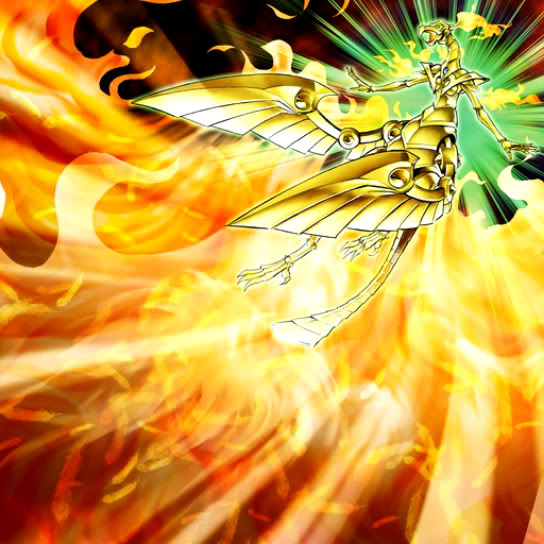 such as: Compulsory Evacuation Device, Ceasefire, Magic Cylinder, Phoenix Wing Wind Blast, Karma Cut, Different Dimension Ground, D.D. Crow, Fairy Wind, Bottomless Trap Hole, Time-Space Trap Hole, Vanity’s Emptiness and perhaps even Dimensional Prison. Fact of the matter is, you have a ton of options, you just have to figure out what you would like. Lastly, by this point you should only have a maximum of a couple spots left open. Fill those with your favorite tech cards, little one-ofs that you don’t necessarily expect to see every duel, but will be quite happy and able to use them when you do. For example, cards like: Mind Control, Glow-Up Bulb, Genex Ally Birdman, Flamvell Firedog, Forbidden Lance, Effect Veiler, Mathematician, Gorz Emissary of Darkness, and you can’t forget any Synchro deck’s best friend, the level modulating Tragoedia.
such as: Compulsory Evacuation Device, Ceasefire, Magic Cylinder, Phoenix Wing Wind Blast, Karma Cut, Different Dimension Ground, D.D. Crow, Fairy Wind, Bottomless Trap Hole, Time-Space Trap Hole, Vanity’s Emptiness and perhaps even Dimensional Prison. Fact of the matter is, you have a ton of options, you just have to figure out what you would like. Lastly, by this point you should only have a maximum of a couple spots left open. Fill those with your favorite tech cards, little one-ofs that you don’t necessarily expect to see every duel, but will be quite happy and able to use them when you do. For example, cards like: Mind Control, Glow-Up Bulb, Genex Ally Birdman, Flamvell Firedog, Forbidden Lance, Effect Veiler, Mathematician, Gorz Emissary of Darkness, and you can’t forget any Synchro deck’s best friend, the level modulating Tragoedia.
So after taking into consideration a ton of different variables, situations, facts, and your comfort level with the cards, you finally have the first draft of your deck. Congrats, you’re almost halfway towards building your own Laval Quasar variant that fits your playstyle perfectly! Remember, testing makes your more comfortable with your deck, and it will allow you to reconsider your deck choices and think of new techs to fill their places. Please take note, everyone’s build should be slightly different – each duelist has a different playstyle than the next, and your deck should be adapted and ready to capitalize on that. We’ve come a long way with the Laval Quasar deck concept, from it’s humble origins in the OCG to the eventual limiting of Rekindling. Now with the best card for this variant limited, it’s time for you to begin innovating again. That’s the whole reason why I walked you through this process – it’s time you picked up the OCG mindset for a change and learned how to innovate and revitalize a deck that seems to have been struck down with the heavy hand from above. Before we move on, I just wanna show off my personal Laval Quasar variant, and I hope you find your own comfort build of this amazing deck!
A Modern View:
I’m positive that the blistering eruption from Mount Thera on the island of Santorini blew you away! (The joke is that it lasted a few fractions of a section, yet was the 3rd most powerful Volcanic eruption in history! True Fact – it exploded with the strength of several hundred atomic bombs) The following link is a screenshot of my personal Laval Quasar variant, built for TODAY. It will not be the best build for you, but it can serve as something for you to compare your newly-built variant to for perhaps a new idea or two – http://i.imgur.com/7MygTp3.png
Pyrotrapstic Flow P3:
“But Quincy, I didn’t see any Laval Traps in your example deck that you didn’t talk about already!” Yeah well, Lavals kinda stole the Flamvell’s Trap Card and made it actually good. Back when the original competitive Laval variants were
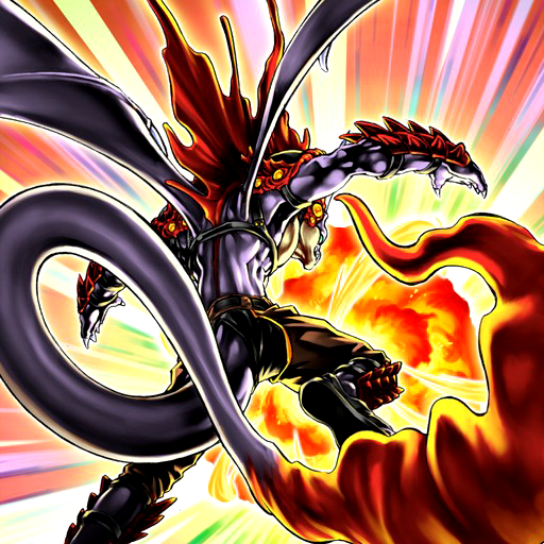
running around, it was HERESY to consider running this card, even though Flamvell Counter could stop so many effects without cost. All you had to do was banish a monster with 200 DEF in your Graveyard. What that meant for Laval duelists was losing one piece of your Rekindling summon, which was a major no-no for such a streamlined variant. I mean come on, they even started running Gold Sarcophagus to get to their prized ‘win button’ card! So why can we run it now? What made Counter lose its taboo status? It’s simple, the evolution of the game.
Despite my avid hate of what it did to the Laval’s reputation, Laval Quasar was a variant that truly showcased the pure potential of a FIRE archetype to do amazing things. Before then, there really hadn’t been a ‘FIRE’ deck that ever made an impact on the game. Volcanics sucked, their endless attempts to make FIRE Burn cards stopped working, it just wasn’t a thing. So for the first time, people got to see a FIRE variant do well. And it was the Lavals leading that charge, as the first archetype to represent their attribute loud and proud. Now, the Lavals are not alone, and there are a ton of decks who simply do the Special Summon game better. They have to bring something new to the table – I see that as being Counter. Even if you doubt my tech of The Warrior Returning Alive, you cannot deny that it makes your banished Laval monsters even more live since Cannon is a Warrior-type! Counter gives you the chance to negate any Spell or Trap, whether it be an attempt from your opponent to stop your OTK or an attempt from your opponent to take hold of the game. All you got to remember is that you have to play smart with it. Dropping Counter on a draw spell may not be the best choice on the first turn – but the later the game gets, the more you may want to stop your opponent from seeing more cards.
Alright folks. We’re almost there. I’m going to close this segment with a little reminder – Laval decks are awesome, you just made your own to prove that. I really don’t want that fact to get lost, as I did throw a ton of information your way, especially in this Deck 3 section. So once more, let’s return to our opening question – “Where do the Laval fit into this portrait?”, meaning inside of the scheme of the Duel Terminal World. I’ve definitely dropped many hints throughout the article, but the name of this section will give it away, so let’s just ignore the fluff and dive in!
Deck 4: The Laval Engine
Question: What is the identity of the Laval Archetype in comparison to the other Second Terminal World tribes?
Answer: The Laval Tribe is ‘The Engine Archetype’
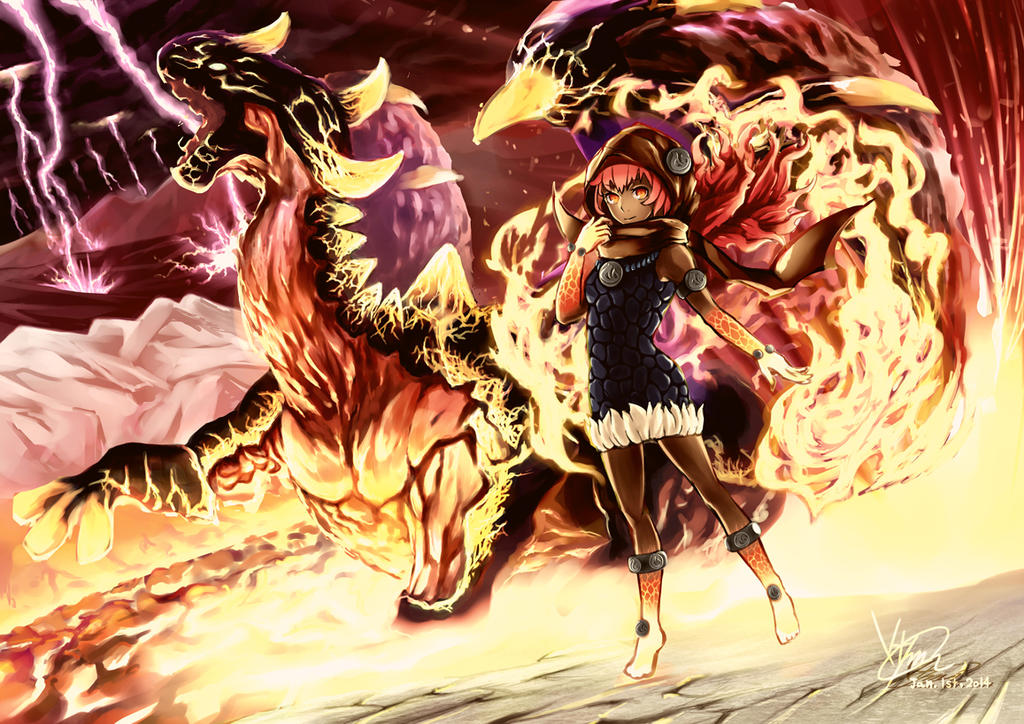
Reasoning & Basic Strategy:
Just let that sink in for a minute. In our first deck, we talked about combining a bunch of different subgroups to make a cohesive whole that could do amazing things. This was the example of multiple Laval engines working together simultaneously. With the second deck, we talked about the Grind Game a certain portion of the Laval posses – That was one Laval engine at work. With the third deck(s), we discussed the Synchro summon potential and amazing abilities of a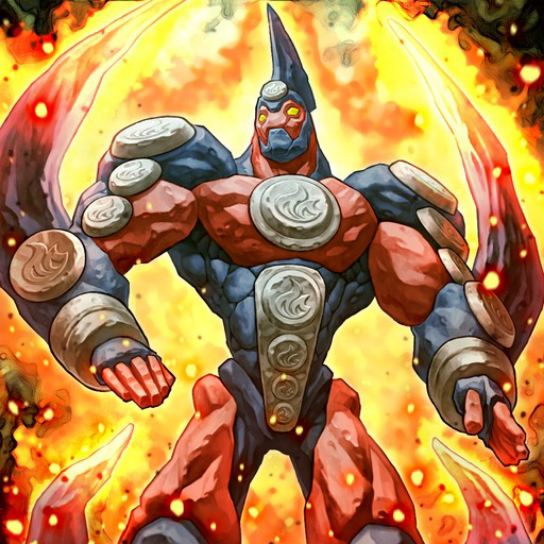 Quasar variant – That was the Synchro engine of the Laval taking its place in the spotlight. All of the above builds, all of the buildup from the trap discussions lead to this point. This barbaric tribe is just another way of showing the age old saying ‘The whole is more than just the sum of its parts”, and this is especially true with the first deck, the Pure Laval variant. If you return to the beginning of the article and just skim it really quick, I hope you realize just why I spent so much time going over the different subgroups and classifications of the Laval monsters – to illustrate just how many different ‘engines’ you can create out of the Laval monsters.
Quasar variant – That was the Synchro engine of the Laval taking its place in the spotlight. All of the above builds, all of the buildup from the trap discussions lead to this point. This barbaric tribe is just another way of showing the age old saying ‘The whole is more than just the sum of its parts”, and this is especially true with the first deck, the Pure Laval variant. If you return to the beginning of the article and just skim it really quick, I hope you realize just why I spent so much time going over the different subgroups and classifications of the Laval monsters – to illustrate just how many different ‘engines’ you can create out of the Laval monsters.
So what do you do with a deck that has a really solid engine? That’s right, make really neat hybrids with it! Laval Quasar was the competitive Laval build of the past, now I think you are finally ready to meet the competitive Lavals of the Future! But before I can showcase any examples, let me outline a couple of reasons for running a Laval hybrid over a pure deck:
- Lavals are one of the BEST decks to combine with other archetypes in a 60-card variant. I’ve beaten the dead horse time and time again about the potential for drawing into the Laval monsters you want in the Graveyard, and with a 60-card deck, that risk is mitigated EXTREMELY well. So well in fact, that you will have a rough time ever drawing into completely dead ‘Laval’ hands.
- The 3rd and 4th Laval Trap cards each offer a really unique supportive element to a deck that is either lacking in responses or lacking in mass destruction. Dustflame Blast is non-targeting mass removal, and Flamvell Counter is a pain to most decks, but most especially, they both are a complete surprise to those unfamiliar with the Laval Tribe’s capabilities outside of a Quasar play.
- Laval offers advantage from the Graveyard with Lakeside Lady that then can snowball into 1-card Synchro plays using Cannon. In addition, when in the Graveyard, the Laval are all FIRE, which opens up the possibility of Blaster in more variants.
- Having a Laval hybrid allows for you to really mess with your opponent when side decking if you build the side correctly, as you can completely switch between two different decks quite easily. Most Laval engines are 12-15 cards, which is perfect for smokescreening!
Now that you know why you should try out a Laval Hybrid deck, let’s check out a few options. We’ll begin with my personal favorite deck from this entire article, 60-card Laval-Strings!
Deck Example – Laval-Strings:
I’m running out of volcanic eruptions to reference, so I guess next up is Mt. Saint Helens… Although unlike that eruption, your deck will not be gone in an instant. Maybe two… The following link is a screenshot of my personal Laval-Strings variant. It may not be the best build for them, but it can serve as a baseline for your deck construction in the future – http://i.imgur.com/vj8nugV.png
Variant Discussion:
Don’t you dare give me that blank stare. If I told you that Shaddolls and Lavals mixed perfectly with each other, now that there is a FIRE El Shaddoll fusion, would you believe me? Well, it’s time for you to start believing. Back when Billy Brake piloted his 60-Card Control deck to victory, nobody considered a 60-card deck to be worthy of competitive play. So how in the world does a 60-Card Laval deck function if that Rekindling is your main power play, and is limited to one? Oh wait…. I’m not running Kindle at all, that’s right. In fact, this build is optimized for one main purpose: eliminate dead hands and always have neat combos. With this deck, I am most certainly embracing the best of both worlds. Shaddolls are great at coming out of the gates strong – with their powerful boss Fusion monsters, anything is possible. A Laval variant is great at thinning your deck so well, and then constantly abusing their ability to keep bringing back the same monster time and time again! Therefore, despite running a 60-card deck, you will have plenty of opportunities to get to the cards that you need.
I kinda said the next major point in the Reasoning section above, but running a Laval engine in a 60-card deck is next near genius since you will be avoiding just about any chance of getting completely dead hands! This is the same exact deckbuilding theorey as what was used in Billy Brake’s variant, except he ran 60 cards to minimize the chances of opening multiple artifact cards! But back to Laval, if you somehow manage to open 6 Laval monsters in this variant… well your luck just sucks. But even if you do draw a Judgment Lord or a Lakeside, this variant actually embraces that BECAUSE you have a chance to actually use them! Remember, both Shaddoll Fusion and El-Shaddoll Fusion each can send fusion materials from the hand, so if you do draw a Laval, just send it for a fusion summon for El Shaddoll Grysta! Folks, this fusion monster is BOSS. Not only because you can negate Special Summons while triggering Shaddoll effects in your hand, but it also has a really neat interaction with Shaddoll Fusion itself in a Laval hybrid variant. Shaddoll decks love sending fusion material from the deck if your opponent has a monster Special Summoned from the Extra Deck, but in this variant, it becomes another way to get your powerful Lavals into the Graveyard. Screw the fusion, he’s just a bonus for being able to mill 2 monsters at once!
Alright, so now we’ve covered the benefits of running 60 cards, let’s talk about why we’re running some of these specific 60 cards. We’ll start with Judgment Lord. Remember this guy, we’ve used him before in Deck 2 as an amazing part of a Rank 7 toolbox. Just banish a Judgment Lord, combine with Cannon, then profit! But that variant can’t hold a candle to the Xyz prowess of this variant. Remember that Egrystal we just get as a bonus? Guess what level it is… So you have two main Xyz pathways: Fusion dumps Shaddoll + Blaster; Special Blaster by banishing 2 FIRE monsters, then make your Rank 7 OR Fusion dumps Shaddoll + Judgment Lord; Banish Judgment with Lakeside to destroy a set, summon Cannon, Special Judgment, Xyz Rank 7. In either situation, no matter how you end it – Egrystal will still activate when it is sent to the Graveyard to let you return one of your two Shaddoll Fusion Spells back to the hand, to do the combo again on the next turn! Sure, Satellarknight can loop Rank 4, but with Laval Shaddoll, you’re looping Rank 7! The next Laval support card that shines in here is Dustflame. Technically, this may seem counterproductive as you are losing whatever setup that was in your Graveyard. That being said, what mass destruction does the Shaddoll archetype actually have? Sure, they screw over Special Summon heavy decks, but they do not have many outs to various side cards such as Shadow-Imprisoning Mirror or Soul Drain. Dustflame solves these issues and more, as it is non-targeting mass removal. That in itself is insanely powerful for a trap card that doesn’t have an actual cost.
Lastly, I want to talk about some of the choices I decided to go with in this variant. Lakeside clocks in at 3 copies, because it is always nice to have extra Spell and Trap destruction backing up your Shaddoll Dragon. Also, Lakeside has the tendency to punish opponents who start attempting to stall by setting monsters. As with a ton of other Laval variants, Cannon is your star power; and I have gone to great lengths with this variant to ensure access to it. By running Reinforcement of the Army at 3 copies, there is much more of a chance of being able to use Cannon’s effect to assume control of the duel and begin dictating the game tempo. That being said, there really isn’t many other warrior-type monsters you would want to run alongside Cannon. But there is one – Armageddon Knight. This DARK/Warrior has strong synergy with the Shaddoll monsters, therefore it is easy to justify his inclusion in any Shaddoll variant; this time, we just have an excuse to run him!
So we’ve discussed a really strong DARK hybrid with the Laval, let’s change gears over to a LIGHT hybrid variant. No, this time I will not be showing you a 60 card variant, but rather the potential for a Laval deck to be really cut down to a small number of cards and the Synchro capabilities when supported by a group of amazing non-tuner monsters! That’s right, we’re bringing in the Artifacts!
Deck Example – Lavart:
‘This is the End’ of pitiful deck example introductions. Thank god, I really was running low on steam there… ha..ha..get it? The following link is a screenshot of my personal Lavart variant. It may not be the best build for them, but it can serve as a baseline for your deck construction in the future – http://i.imgur.com/1fOoU2G.png
Variant Discussion: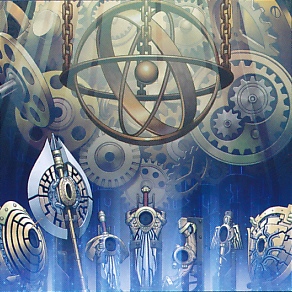
You know the saying you can throw Artifacts into anything and make it better? Well that’s not exactly true, but in this case, it is an amazing combination. Hybrid decks are wonky by theory – you have to have two separate archetypes that can function together in order to have a feasible hybrid deck. It is a plus if the two archetypes can actually coexist and work together and benefit from each other: i.e. Mermail and Atlantean. That pairing is literally a perfect ‘hybrid deck’ as the Mermail help the Atlantean trigger their effects, and the Mermail have a large amount of fodder to work with. The vast number of different ‘builds’ of the WATER variant then are a result of this compatibility. Returning to the Laval and the Artifact archetypes, they do not have that compatibility factor. The combination of Laval and Artifact works, this hybrid is actually amazing, because the problem of each is solved by the other.
Let’s explain that further. What’s a typical Artifact engine you can splash into a deck? Is it 3 Sanctum, 3 Moral, 2 Beagal, 2 Ignition? But what happens if you open multiple cards of your engine, or if you draw a ton of your Artifact monsters? The fact of the matter is, you don’t want to be drawing tons of Artifact cards together; you want to draw the cards that pull them right out of the deck. Because as the number of Artifact cards you draw increases (instead of toolboxing them out of your deck), your chance of having actual plays to match your opponent drops. This is true in HAT Variants, Shaddoll/Artifact Hybrids, Artifact Constellar and more. Now doesn’t this problem of dead draws sound familiar…. 
That’s right, the Laval share a similar characteristic with the Artifacts! We’ve tried multiple solutions thus far to the hand issue – making everything usable, getting good at the grind game, running 60 cards to eliminate the chances… but Laval/Artifact hybrids eliminate that as an issue. Unless you open ALL Laval cards or ALL Artifact cards you don’t want to draw, you will have a tough time getting a completely dead hand. If you have a ‘dead’ amount of Artifact stuff in your hand, you cannot possibility have a dead amount of ‘Laval’ stuff in your hand. The point of this deck is to have options – have a chance to play even if your Lavals don’t want to be drawn nicely. As you can tell by the example decklist, it actually turns out one of the best hybrid builds for Lavals is if you heavily invest in deckspace for two archetypes. You can run the BEST qualities of each, without increasing your fear of dead hands that a lot of other hybrid variants face. I’ve spent a large portion of this section talking about hybrid decks in general, so I’ll close that discussion here so we can talk more about my specific example deck.
With this kind of Laval variant, you have a really strong Artifact core to rely upon for destruction. Of course, you can always run Dustflame as additional, non-targeting destruction (like I did), as you can actually end up triggering your own Artifacts in a pinch if you have more Laval in your Graveyard than cards your opponent controls. This is a blessing and a curse, but I’ve found that you can have some really cool plays with using the Artifact(s) you destroy as Synchro material for Level 6 and Level 8 Synchro Summons! Artifact Sanctum is an extremely powerful card when paired with Artifact Moralltach, and don’t underestimate the power of your opponent blind-destroying your face-down Artifact! With Raigeki Break running rampant, Shaddoll users dropping Dragon all the time, even MST seeing a resurgence as of late – you may just get lucky. On one final note, if you are able to anticipate what your opponent can and will do and have the experience with many different decks to do so correctly and consistently, you will find that this deck has the uncanny ability to let you severely punish your opponent for any simple mistake. You got the explosive power of the Laval behind you, what could go wrong!?
Possibilities…

So I picked the above two because I feel like they seem to be the most competitive Laval hyrbids at the current time (and potentially the most competitive Laval decks period). You may feel like they aren’t true Laval variants, but just remember, the Laval aren’t just dead cards sitting by watching as the other archetypes pull all of the weight. It is an equal representation in most combinations, as there are unique and really cool plays that can be made as a result of running both halves! As for some other Laval Hybrids you just have to check out:
- Lavalvell: Both Flamvell and Laval, two FIRE Duel Terminal archetypes, work fairly well in tandem, due to the whole 200 DEF FIRE thing they got going on. Probably this is your best bet of running a Flamvell deck right now. It doesn’t necessarily have amazing big plays, but locks the opponent out of their graveyard pretty well.
- Gishki-Laval: You did not read this wrong, and yes, it can be somewhat functional. The two tribes may have united to form Lavalval Chain, but these archetypes really can pack a punch together in the actual game as well. With the Gishki offering consistency and boss monsters and the Lavals offering destruction and deck-thinning, it can be a unique clash of the attributes combination! Also, for those who really want to believe that FIRE and WATER are better than LIGHT and DARK, Frost and Flame Dragon is a fun pick for the casual version!
- Macro-Laval: The entire purpose of Macro Lavals is to set-up your grave, deal with any perceived threats your
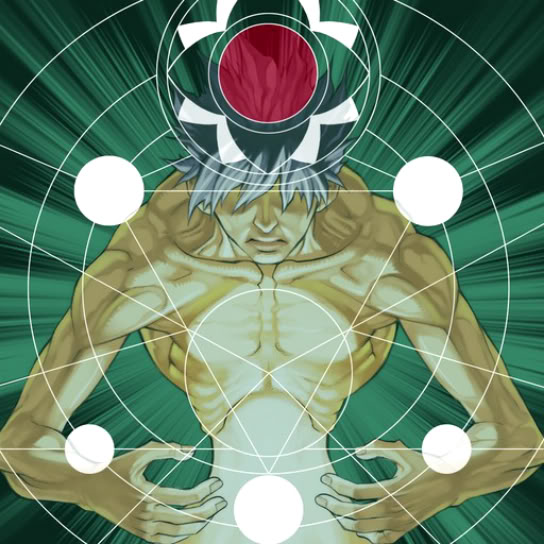 opponent possesses (through the usage of the expansive Laval Extra deck, notably Laval Stennon, who continues to be a massive threat, as well as the effect of Laval Lakeside Lady) then turn on some form of banishment at a point in the future, be it Dimensional Fissure immediately afterwards or Macro Cosmos later on. This functions to punish your opponent’s previous plays using Lavals superb ability at pinpoint removal, and then shut down future plays. Once banishment is up, Lavals have the ability to still sustain advantage despite being a grave reliant deck through the use of cards like Laval Cannon (which is essentially the best monster in the deck for applying pressure, in addition to being searchable by RotA, which is now at 3.) and shut down most counter plays your opponent will attempt to put into effect.
opponent possesses (through the usage of the expansive Laval Extra deck, notably Laval Stennon, who continues to be a massive threat, as well as the effect of Laval Lakeside Lady) then turn on some form of banishment at a point in the future, be it Dimensional Fissure immediately afterwards or Macro Cosmos later on. This functions to punish your opponent’s previous plays using Lavals superb ability at pinpoint removal, and then shut down future plays. Once banishment is up, Lavals have the ability to still sustain advantage despite being a grave reliant deck through the use of cards like Laval Cannon (which is essentially the best monster in the deck for applying pressure, in addition to being searchable by RotA, which is now at 3.) and shut down most counter plays your opponent will attempt to put into effect. - Laval-Sworn: This was a fan favorite for some time, before Lightsworns actually became revitalized with their own support. While the mills from Lightsworn monsters are more random than the typical Laval variant would like, there was no denying the extra mill power was much appreciated if you already had a Rekindling in your
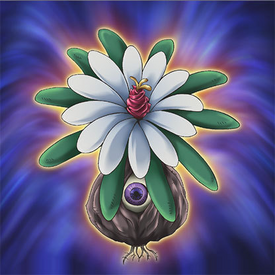 hand. Nowadays, it seems as though Laval-Sworn has died out in popularity in favor of a more pure LS variant.
hand. Nowadays, it seems as though Laval-Sworn has died out in popularity in favor of a more pure LS variant. - Laval Synchro Plant: Think Karakuri Machine Plant, just substituting the Machines with Lavals. Now you got a deck that’s on fire. With such a large amount of powerful FIRE monsters in tandem with a solid plant lineup, your copius amounts of tuners will never go to waste due to Dandylion tokens! This variant also benefits the most from Mathematician, since you have so many different monsters of various archetypes that benefit from being sent to the Graveyard.
While some of the above combinations may not be the most competitive decks in the world, they all offer a really fun time if you just wanna sit back and play Lavals for the fun of it. Gosh, I ended up having so much fun making an example Laval Synchro Plant variant that it entertained me for 2 hours… while I should have been writing this article, of course. So now I hope you see just how versatile the Laval archetype can be, and I honestly believe I had to have mentioned at least one variant over the course of this article to prick your curiosity! Sadly, its now time to wrap everything up, so let’s just get the closing over with!

Conclusion:
So let’s recap, because we have seen many facets to the Laval archetype, they truly can shine with the rest of the tribe of the Duel Terminal and are extremely unique in a variety of ways. You’ve been introduced to all the fun little tidbits about the barbaric nature of the tribe, how that connects to their actual effects, and how detailed their home, the Lava Zone, truly is! You’ve seen tons of variants that don’t RELY upon Rekindling, and you’ve even seen some that can use it in more ways than just making Quasar! You even met the Laval deck that turns one of its main disadvantages into its strong characteristic WHILE using a wide variety of extra deck monsters! Of course we got to analyze the power of the most common Laval variant; however, we got to look at it from a variety of perspectives and you probably even learned something new about the difference between the TCG and the OCG deckbuilding mindset. Lastly, we answered the age old question – What Terminal World role do the Laval fill? – and you got to see some pretty unique combinations that actually can fair decently in a competitive environment! Before I conclude this article, I’m going to list my common misconceptions for the Laval tribe that I can’t reiterate more! Hang in there, there’s only a bit of text left!
Three Common Misconceptions about the Laval Tribe:
- Laval variants cannot function without Rekindling – FALSE
- Literally this entire Mega Article was devoted to proving that. If you still believe that Laval is simply the best deck with access to Rekindling, everything must have gone in one ear and out the other… And that’s a lot of words to simply waste your time on.
- Laval variants are a one-trick-pony: Summoning Quasar is their only defining characteristic – FALSE
- If you read this entire article and can look me in the eyes and tell me that the above line is true, you are a great liar and definitely have some issues to address. If you doubt that I have told you the truth, then I beg of you to reconsider. Re-read the entire Deck 4 portion again, because both example variants are proof that it isn’t true, AND they don’t even need Quasar.
- Laval variants are more susceptible to Graveyard control, beyond a Graveyard-based Deck – FALSE
- I believe that the ‘Macro Laval’ variant I talked about briefly 2 sections prior explains quite well how that isn’t true. Yes, you may have a tough time in the beginning if you don’t manage to fill your Graveyard first; however, a lot of the ‘Graveyard floodgate’ options are limited in the TCG.
- Laval variants can never get better over time, as newer archetypes will just keep getting faster and faster – FALSE
- The game design team has shown quite a large amount of compassion towards Legacy archetypes; especially members of the Duel Terminal world. We’re even starting the third ‘Duel Terminal World’ as the batch of core archetypes! With The Secret of Evolution, the next pack in the OCG, we will actually complete the elemental cycle! With Infernoids as the FIRE, Necloth as the WATER, Spirit Beast as WIND, -tellarknight as LIGHT, Shaddoll as DARK, Qliphort as EARTH, and Yang Zing as the multi-attribute. So hope is not lost for the Laval, especially since Gem-Knight, Gusto, Dragunity, Constellar, and Naturia (and maybe more I can’t think of off the top of my head) have gotten multiple legacy support cards in recent packs. I’m just going to continue holding out hope that Laval is in the next batch of ‘new Legacy cards’ to be revealed. I mean come on, they just upgraded Blaze Accelerator for the Volcanic archetype… It’s time they showed the Laval at least an equal amount of love, if not more because Laval are just that amazing.
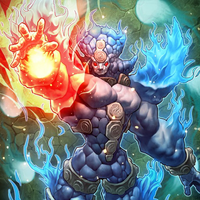
Closing:
Thank you very much for spending your precious time learning about the barbaric invaders who hail from the Lava Zone! In summary, you’ve met the full force of the Laval when they unite together under one banner! You’ve experienced the power of the grind game of a Laval deck, especially when it is built to last forever while still exerting pressure on the opponent! You’ve even adapted such a strategy in multiple ways: from making a recursion-based variant looping through the Graveyard and banished pile, to making a variant completely dedicating to burning away the opponent with Lavals, to making a variant that isn’t turbo Quasar but can still Synchro Loop! You’ve been reminded of the Laval builds of the past, and perhaps have first become aware of the acute differences between the deck building theories of those in the TCG and those in the OCG. We even built the foundation of your own deck building mindset by forming a combination of the OCG and TCG strategies, and I’m sure you are well on your way to creating an amazing Laval Quasar variant of today that will soon be ready to go out and compete in the meta! Lastly, we answered the age old question of the main role of the Laval tribe and analyzed just how powerful the Laval engine could be. We even applied this answer into two different example variants, and analyzed our deck building theories in action! And of course, who could forget the list of additional variants to explore! We’ve covered a lot in this article, so I hope that it has managed to inspire you to ascend to greater heights and appreciate how captivating the various Duel Terminal archetypes really are! And never forget – Laval does not have to hinge on Rekindling!
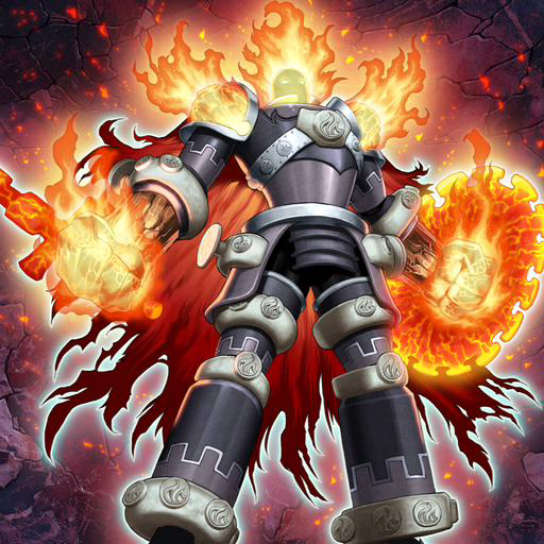
This has been an installment of the recorded histories of the Terminal World.
Data Access Log: ____Batel_____
